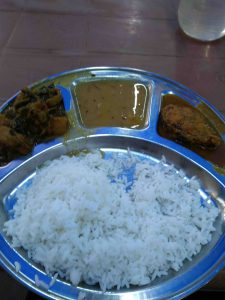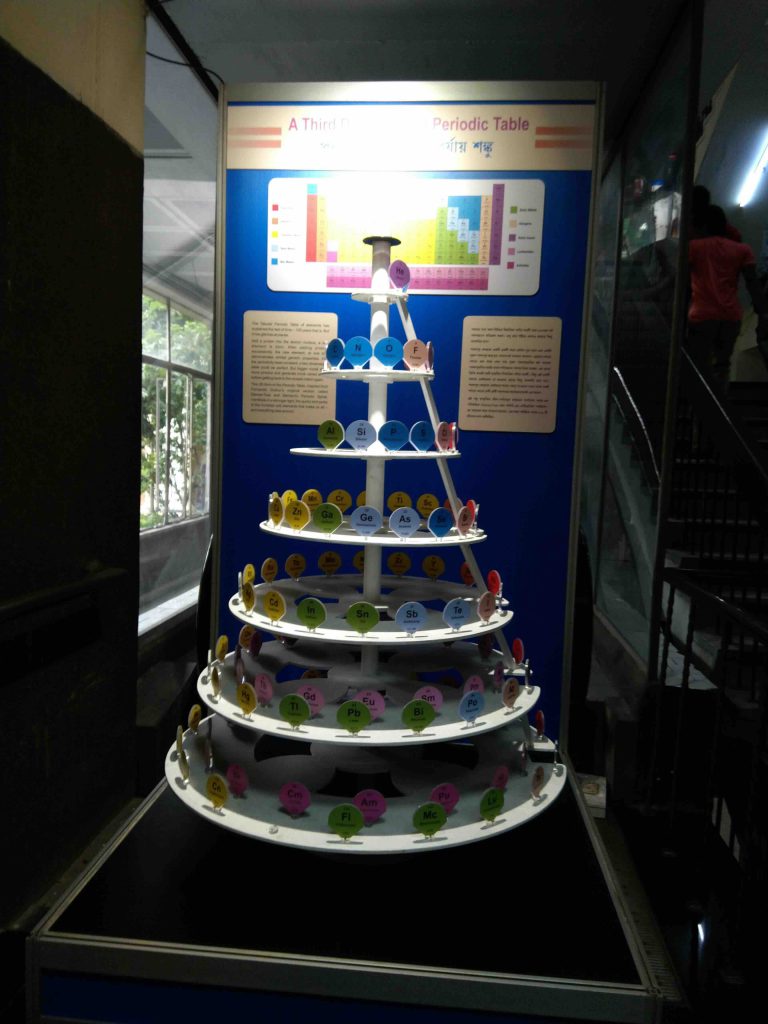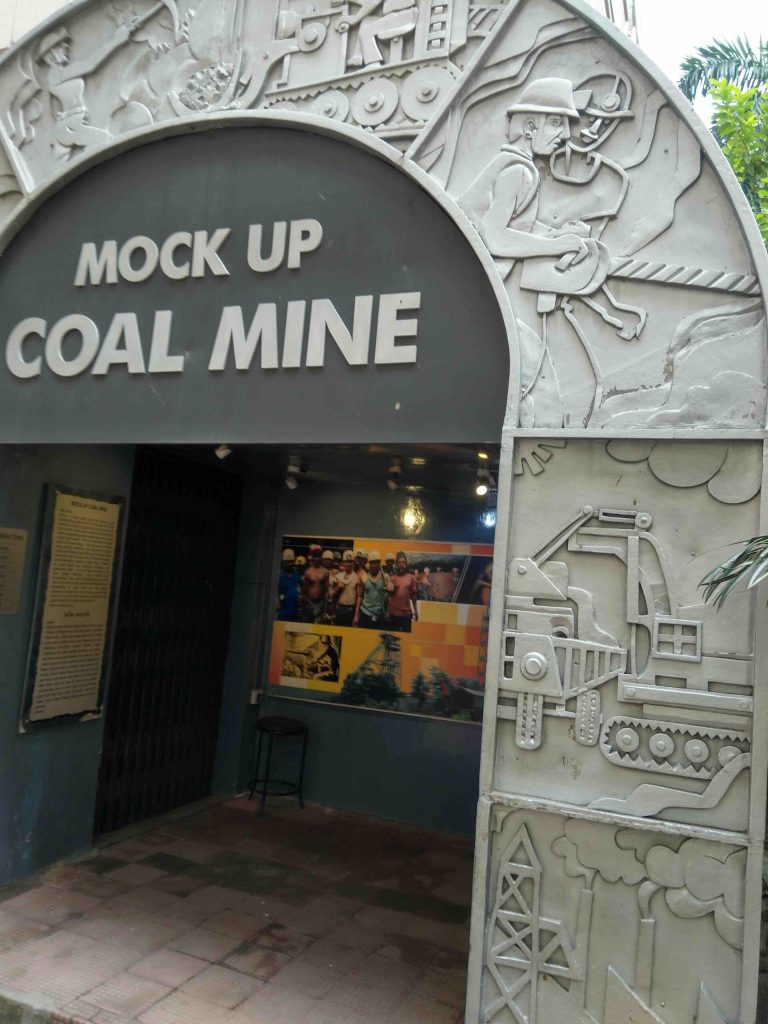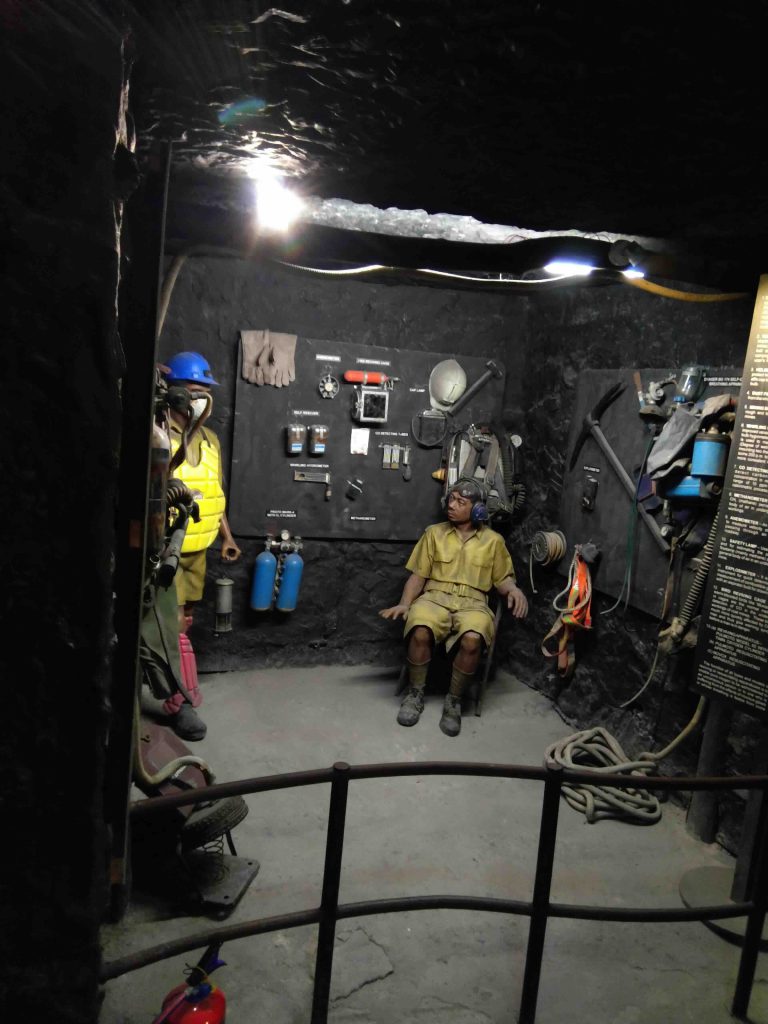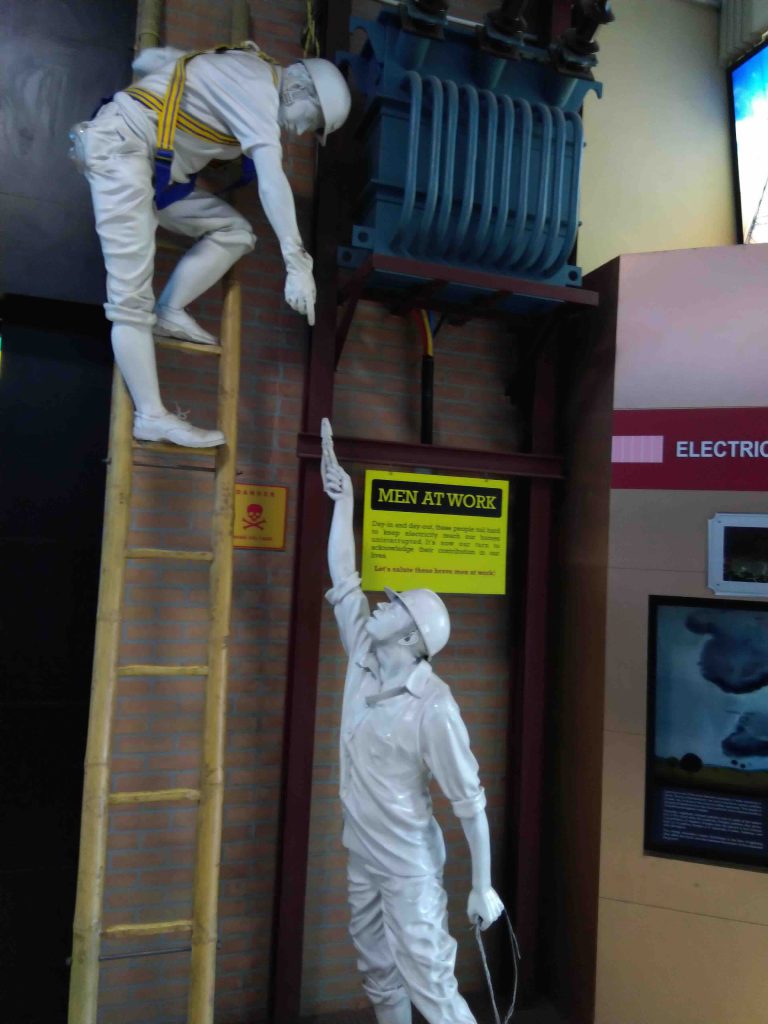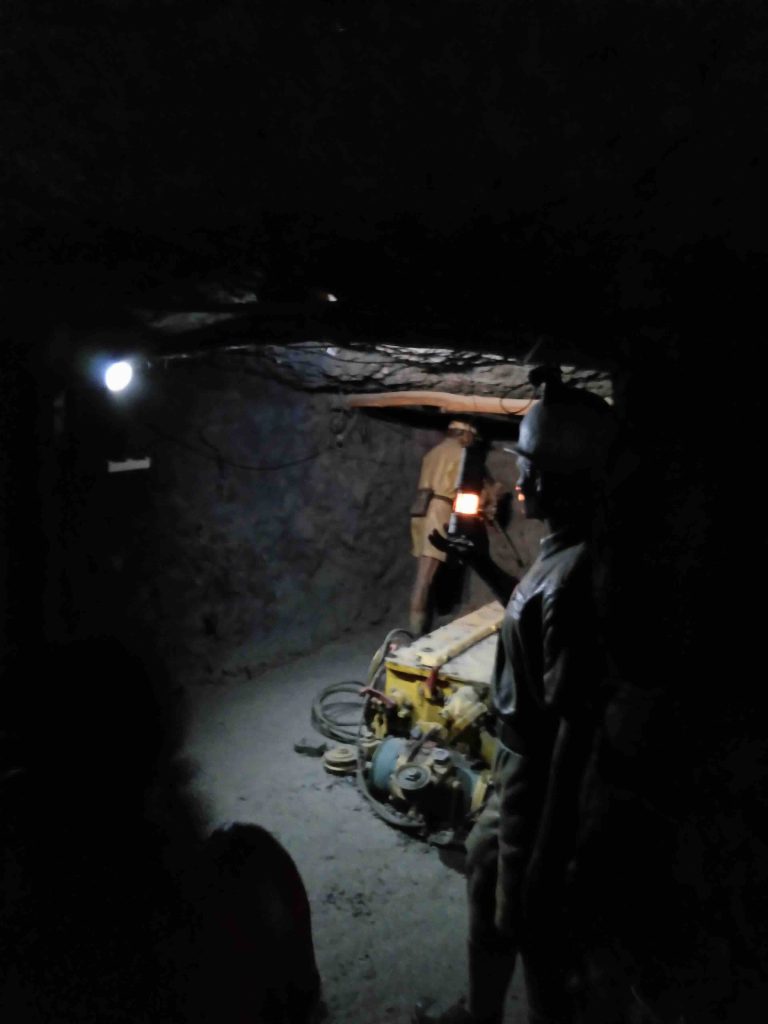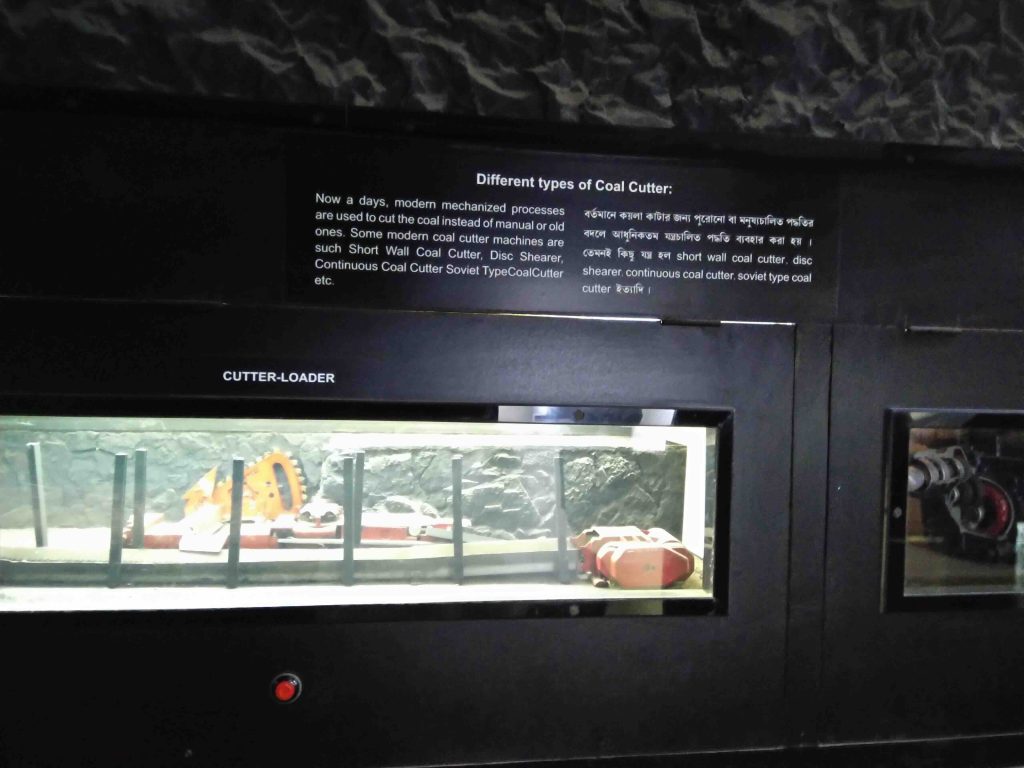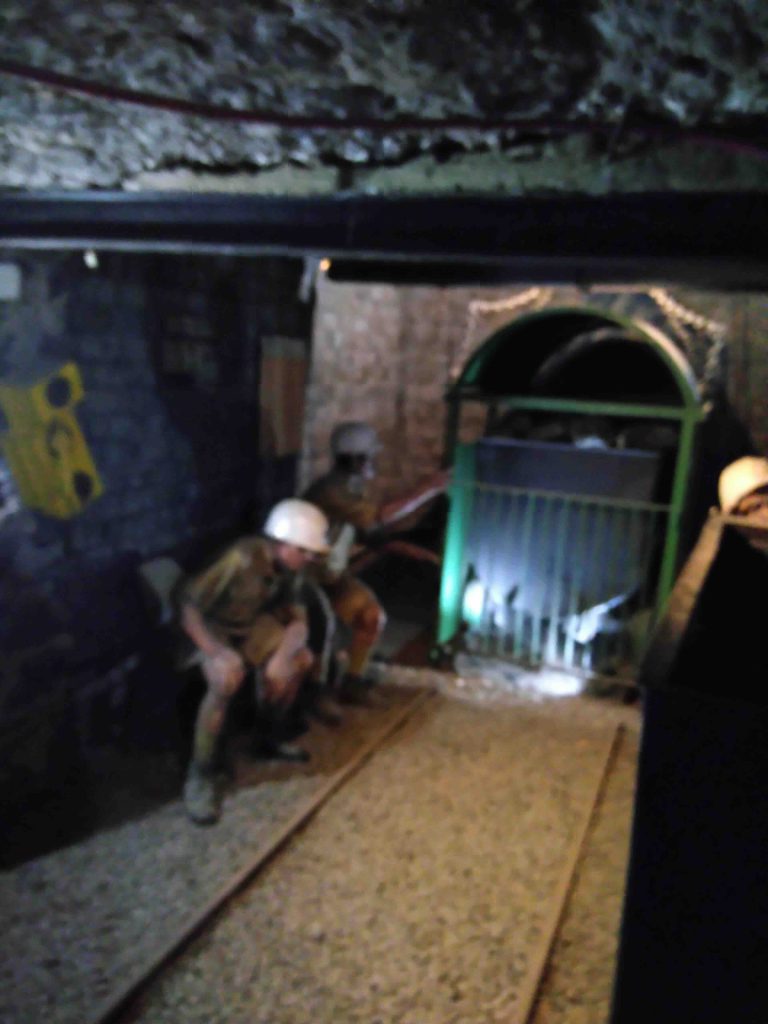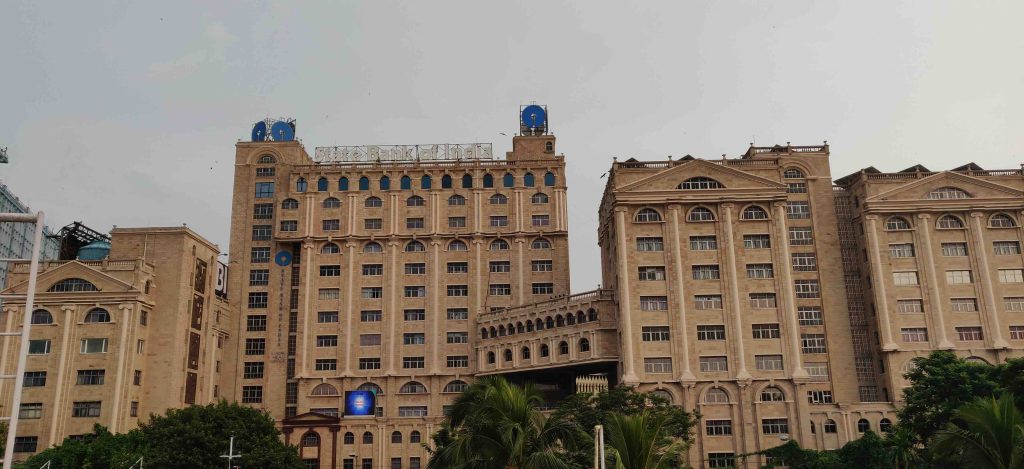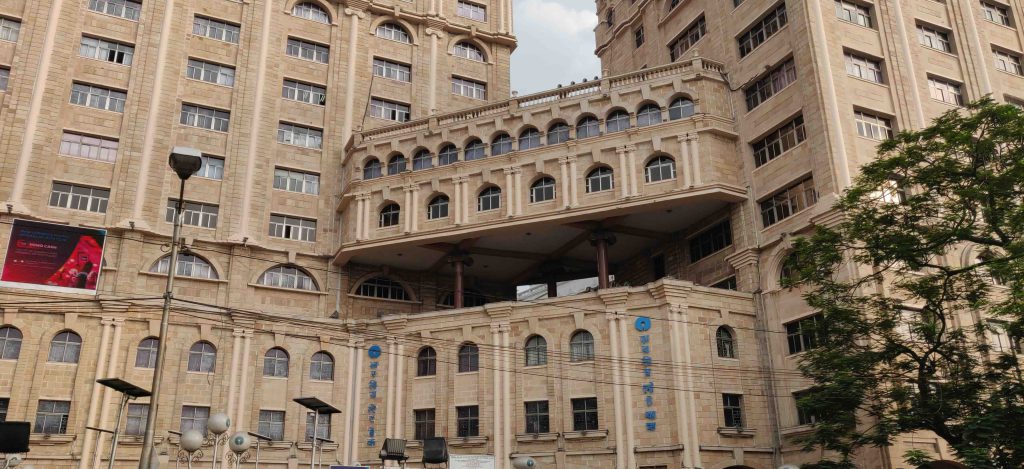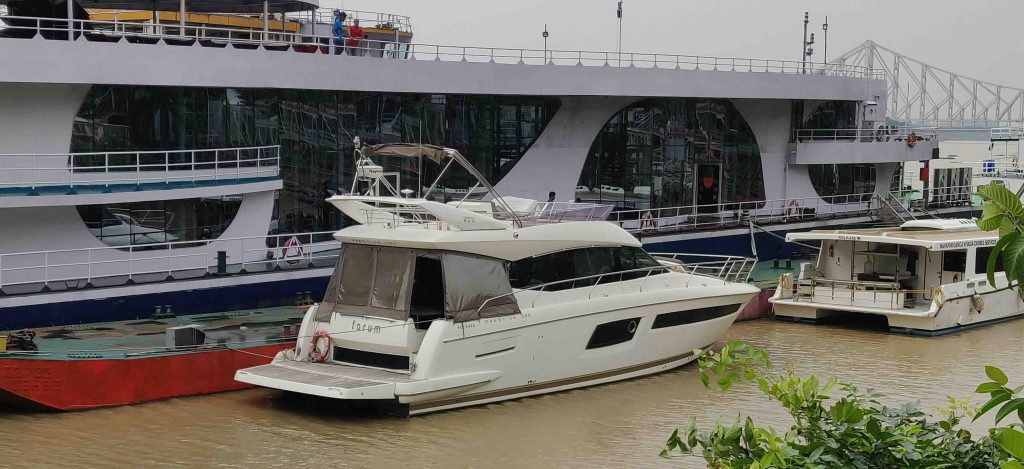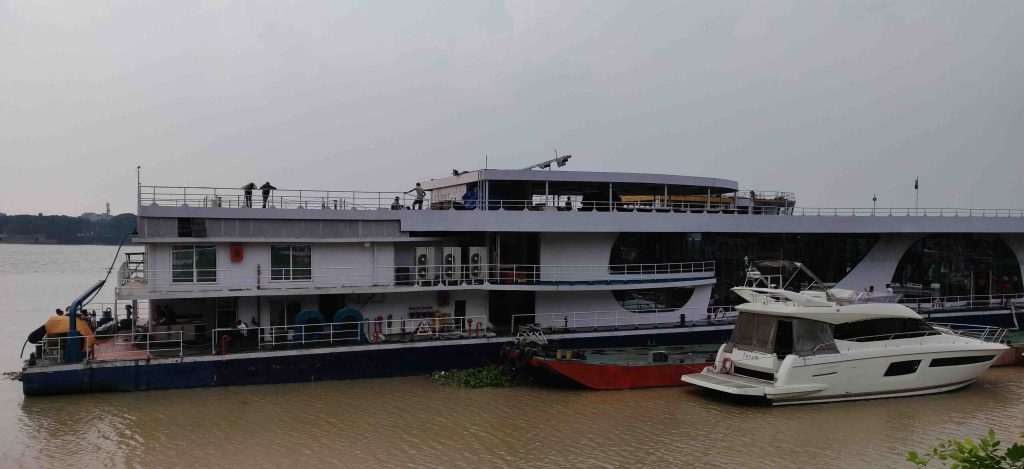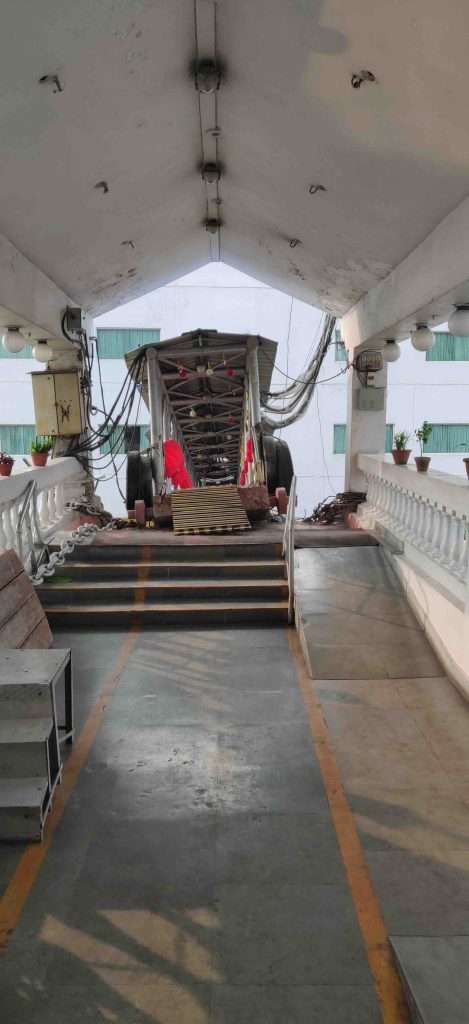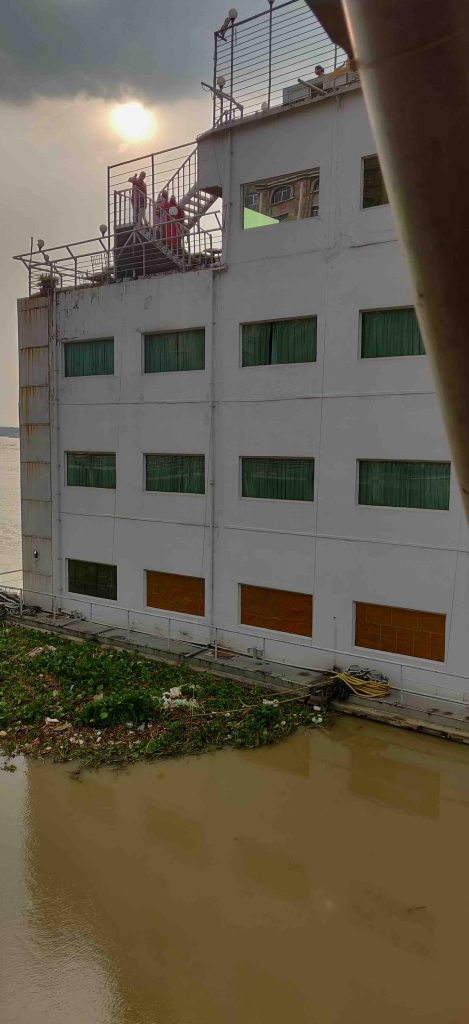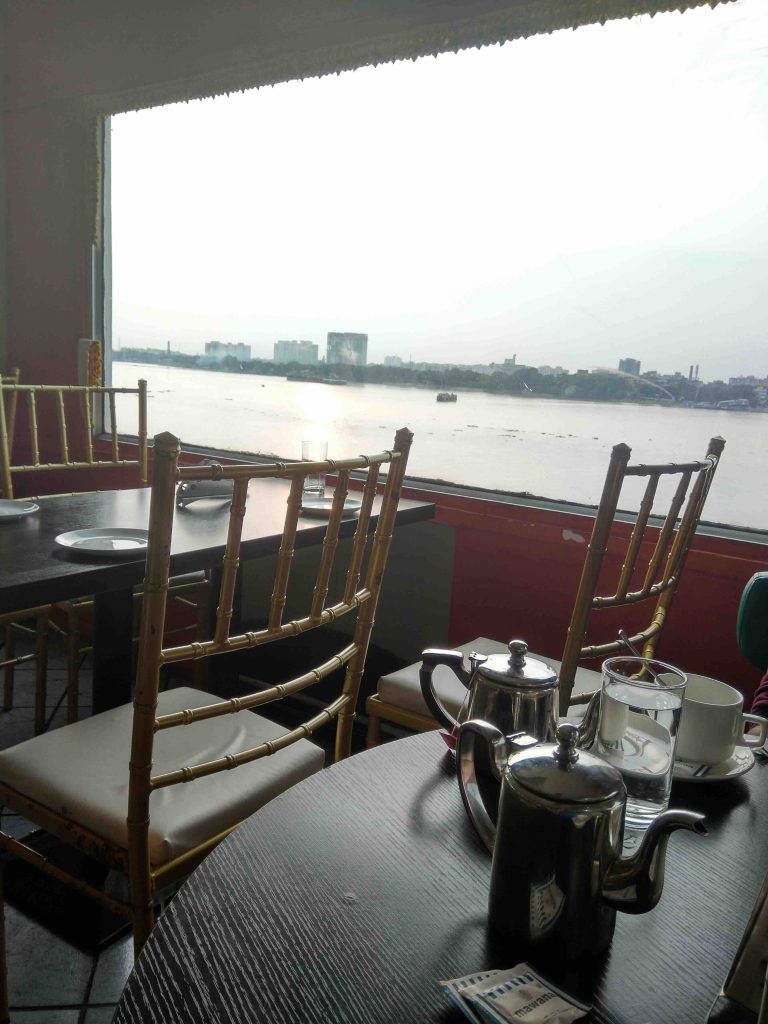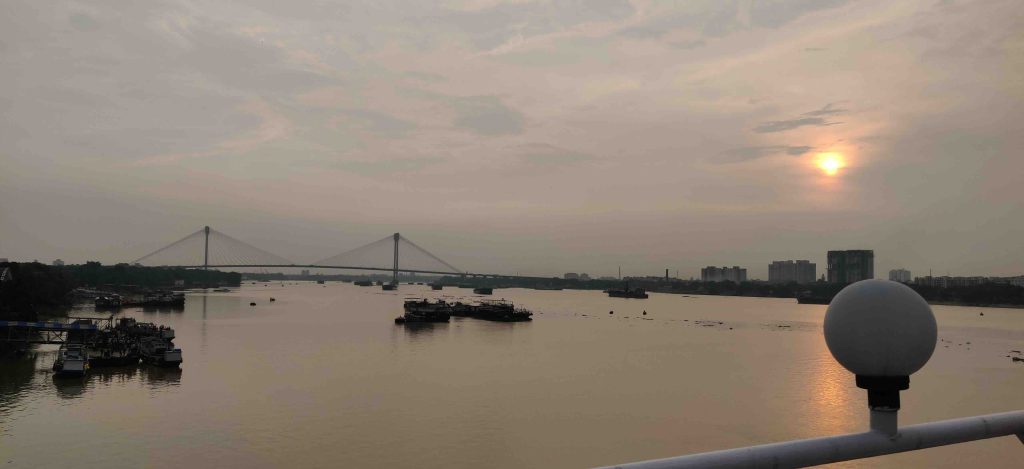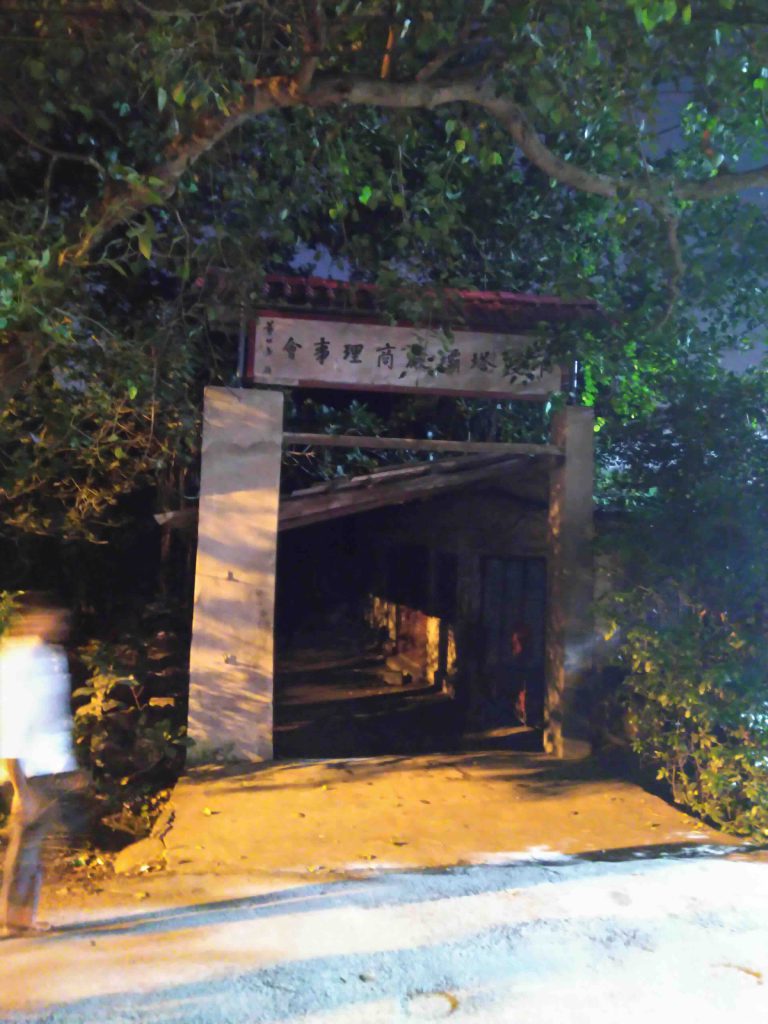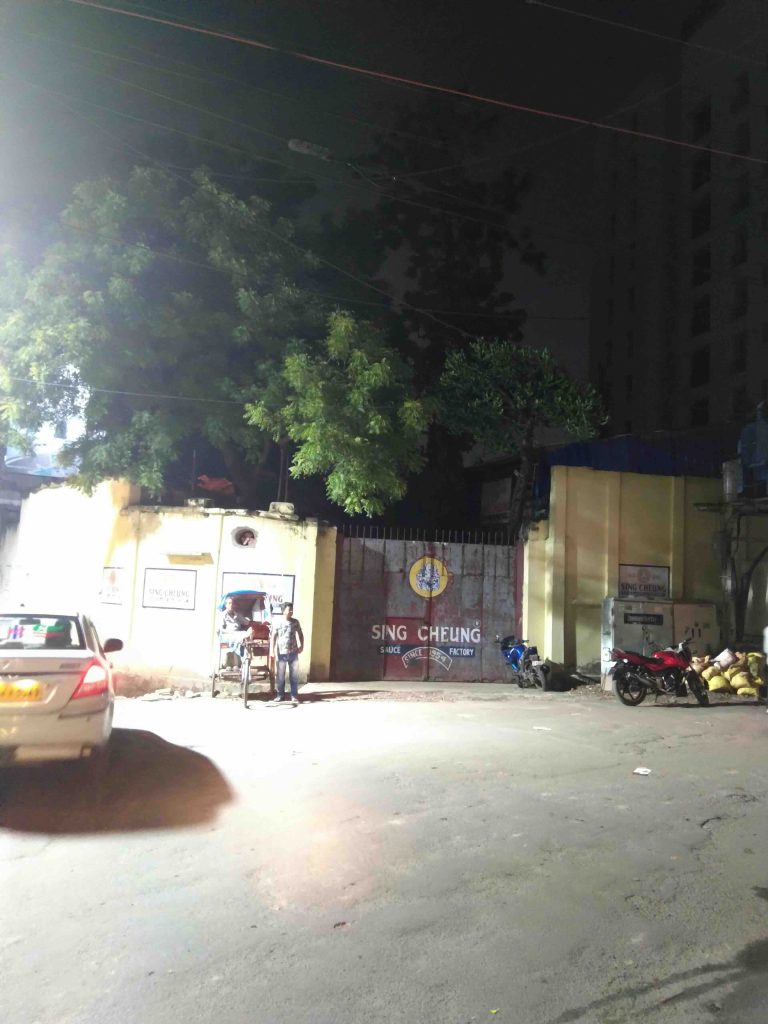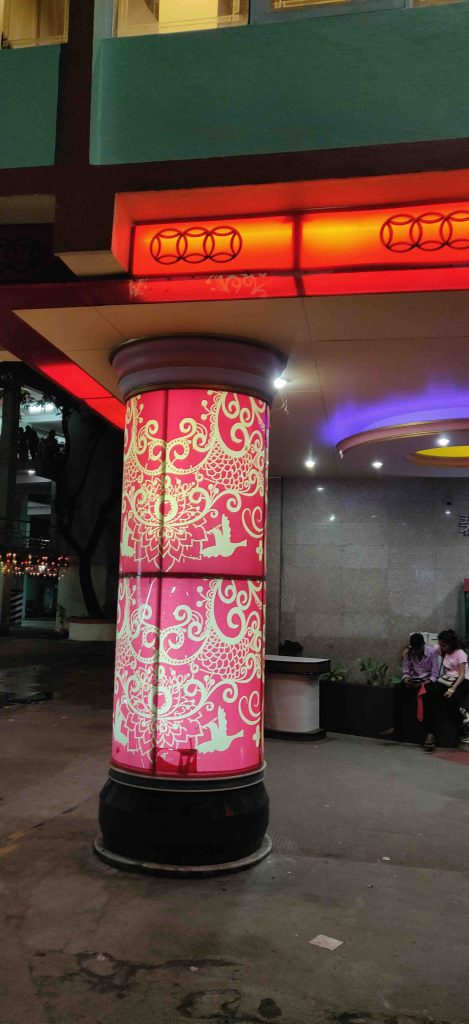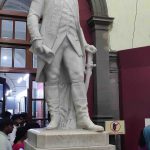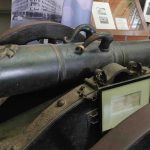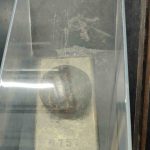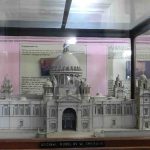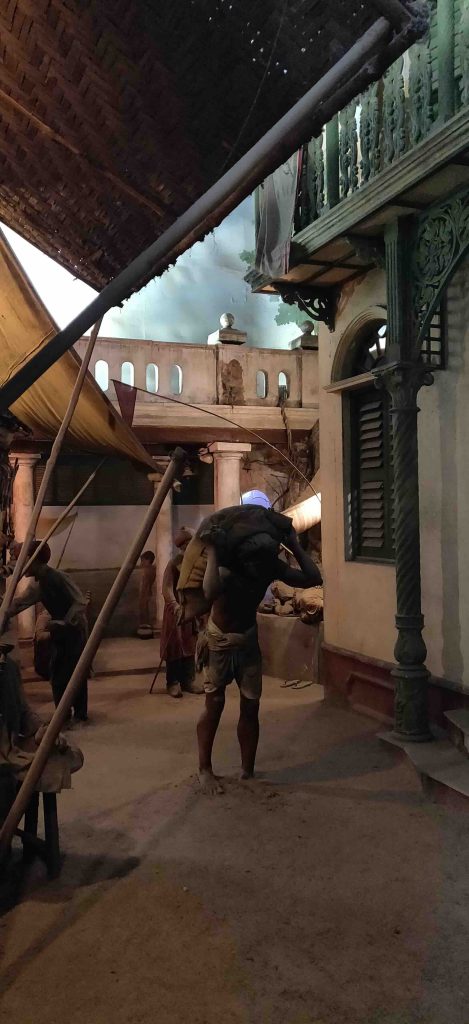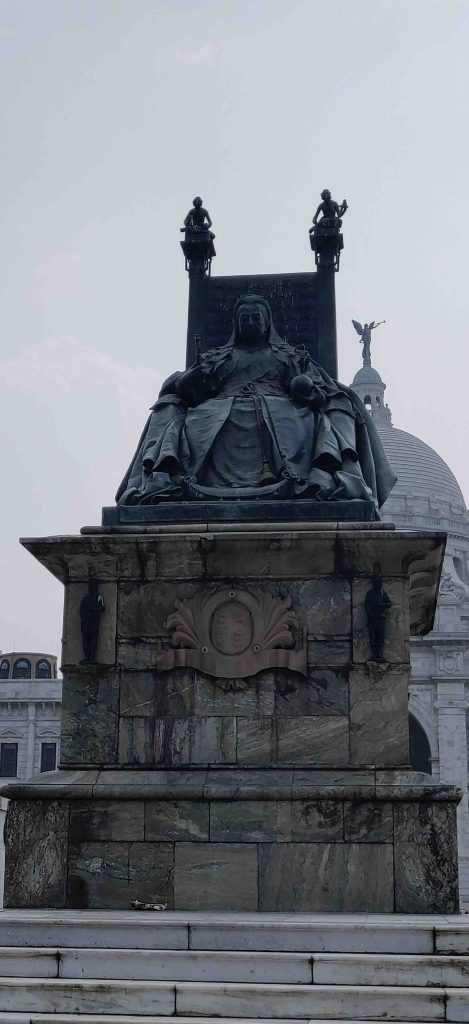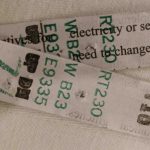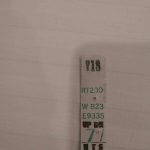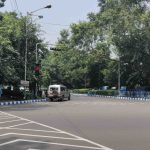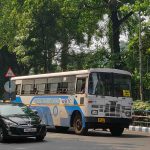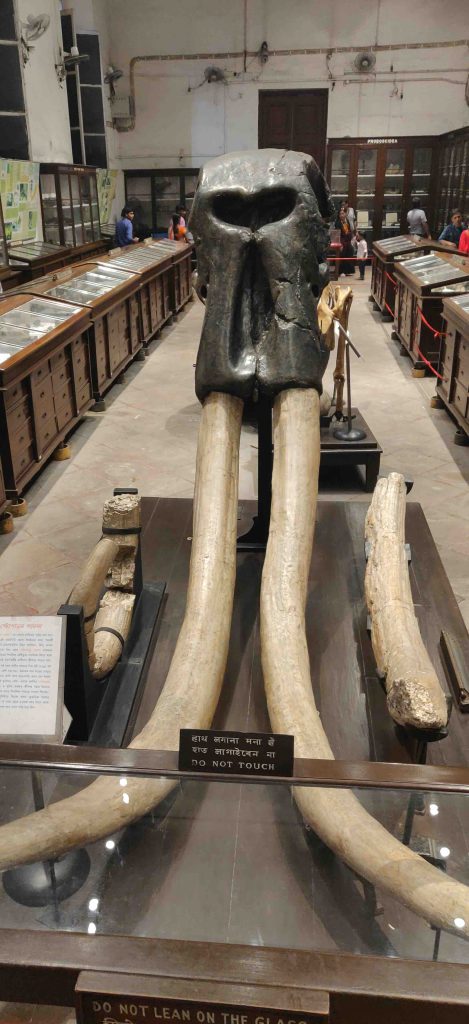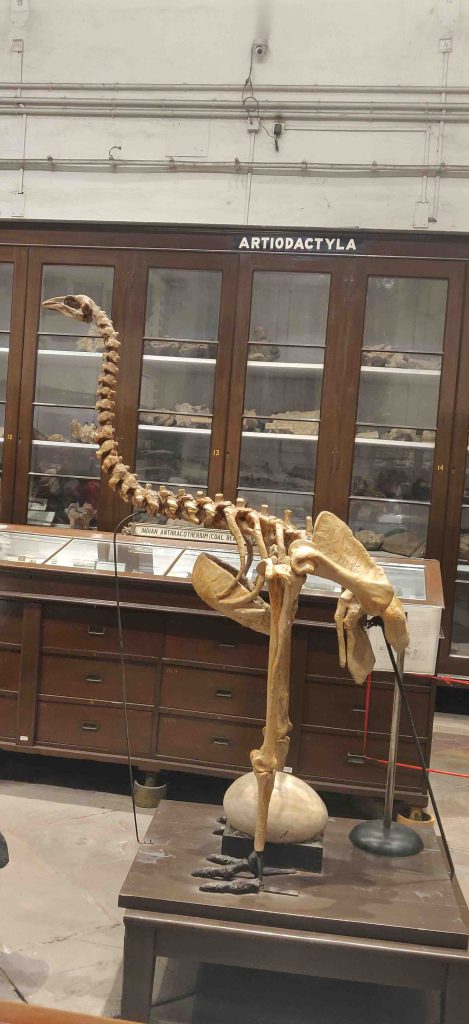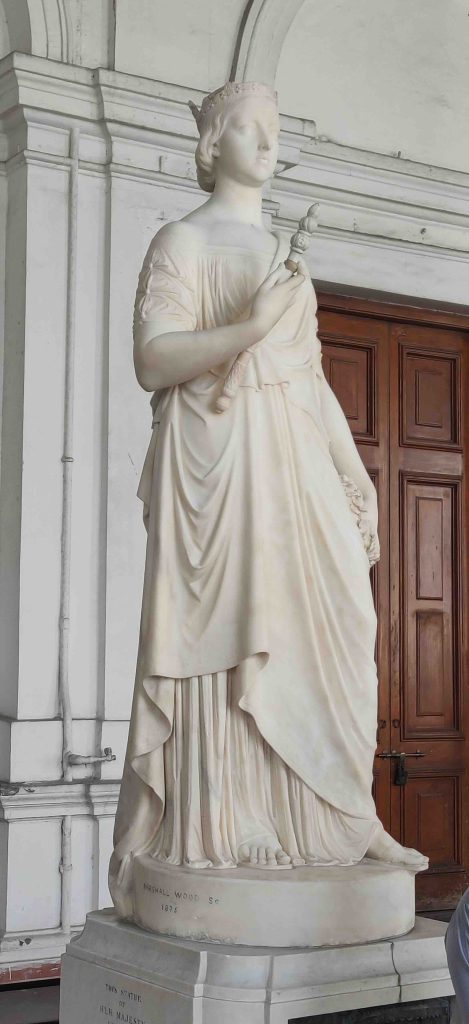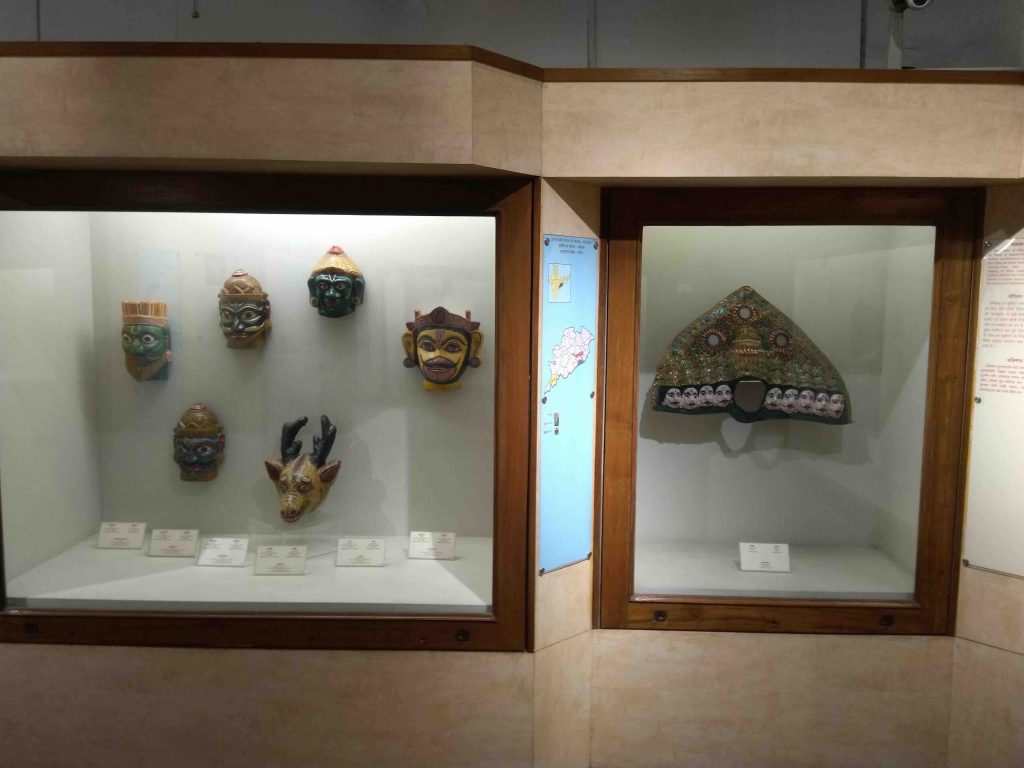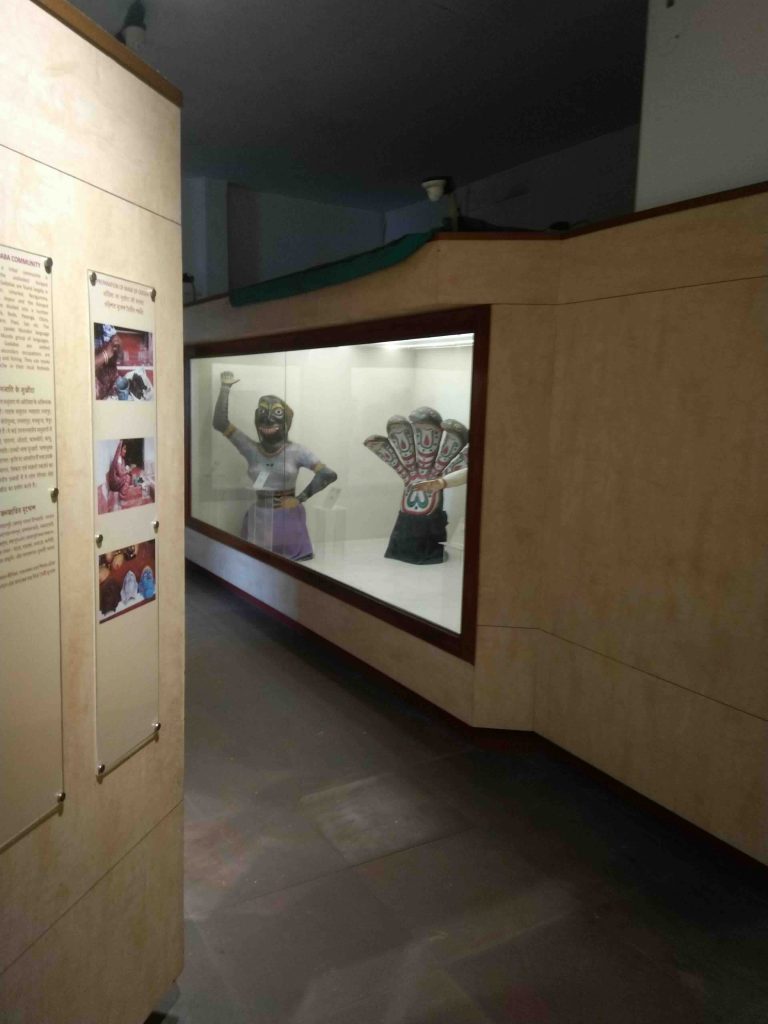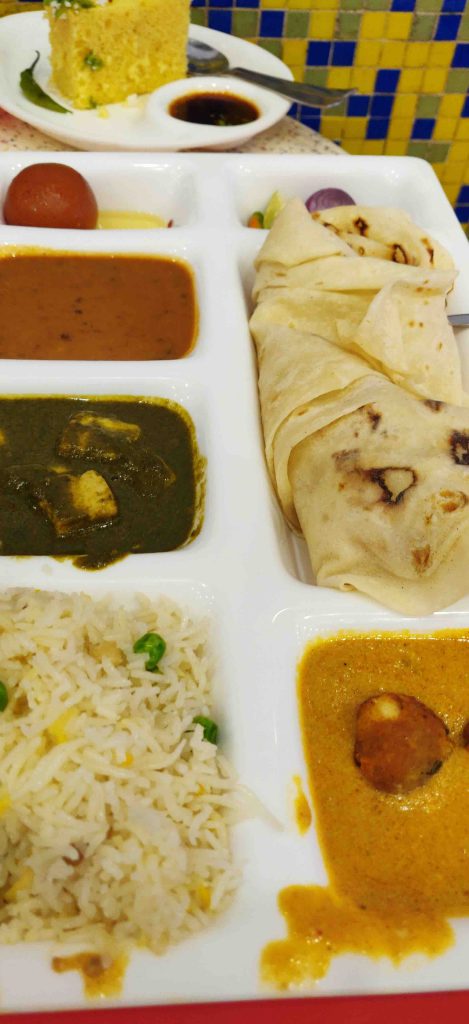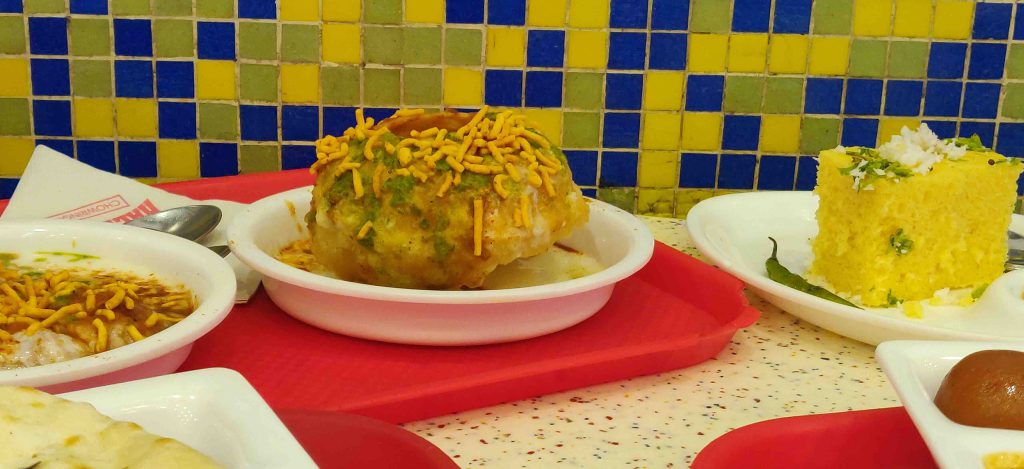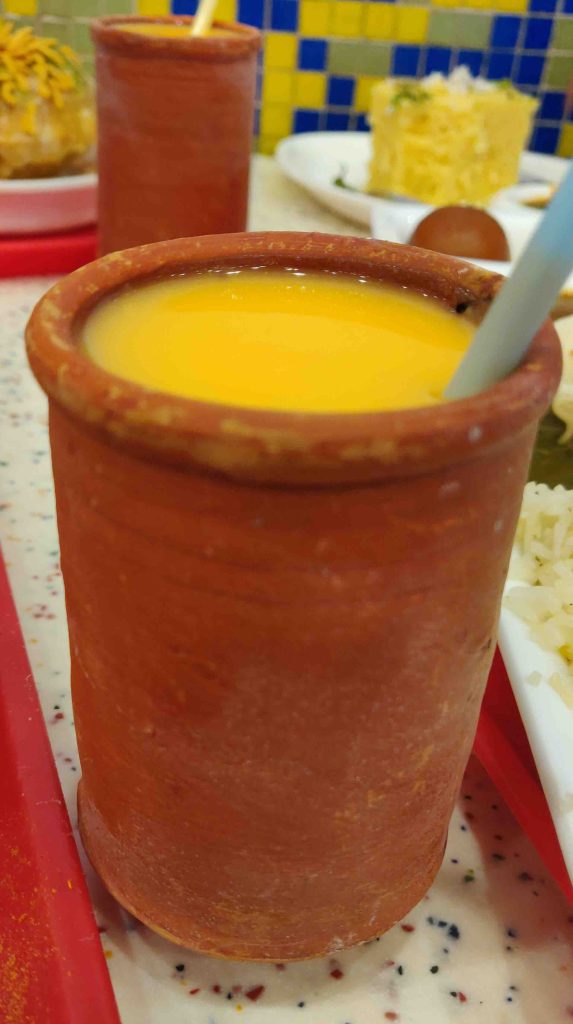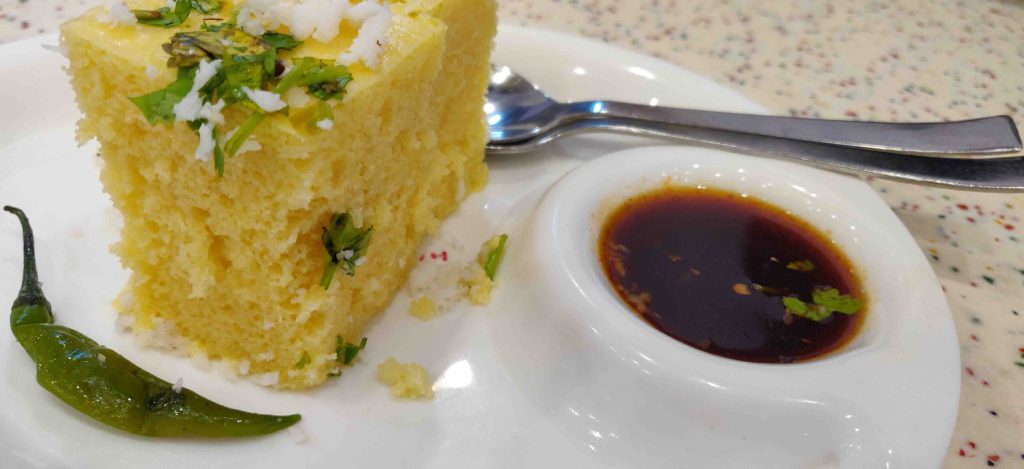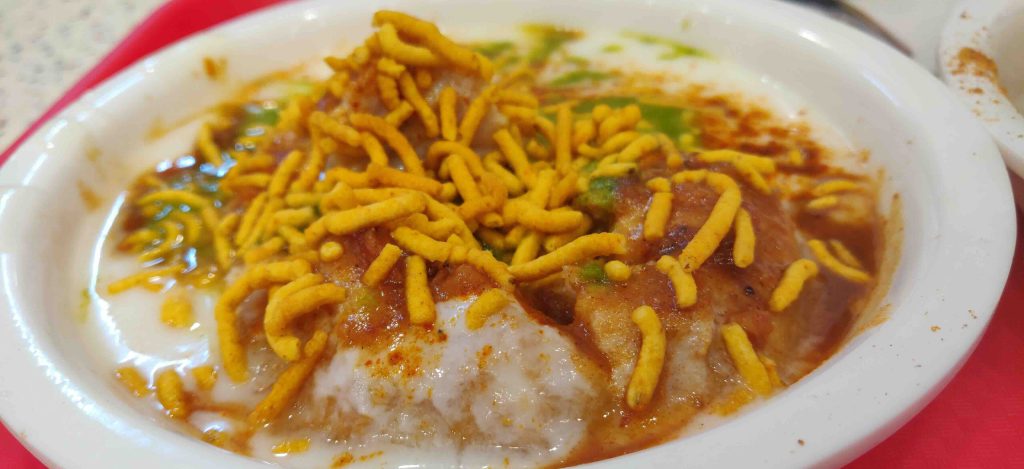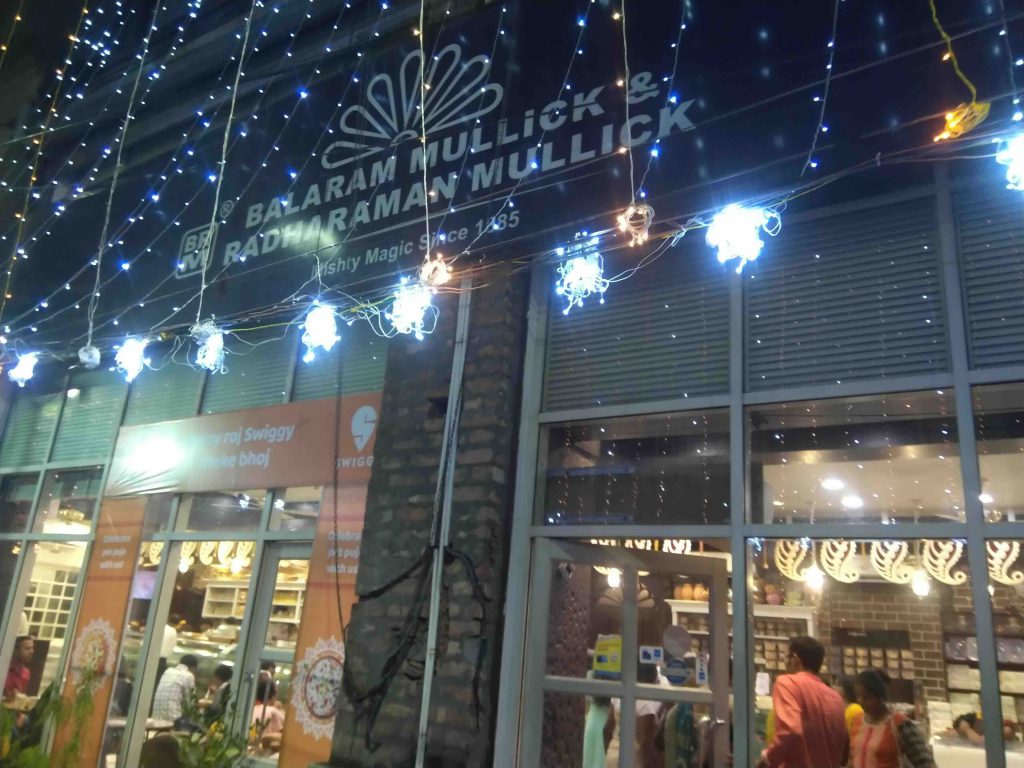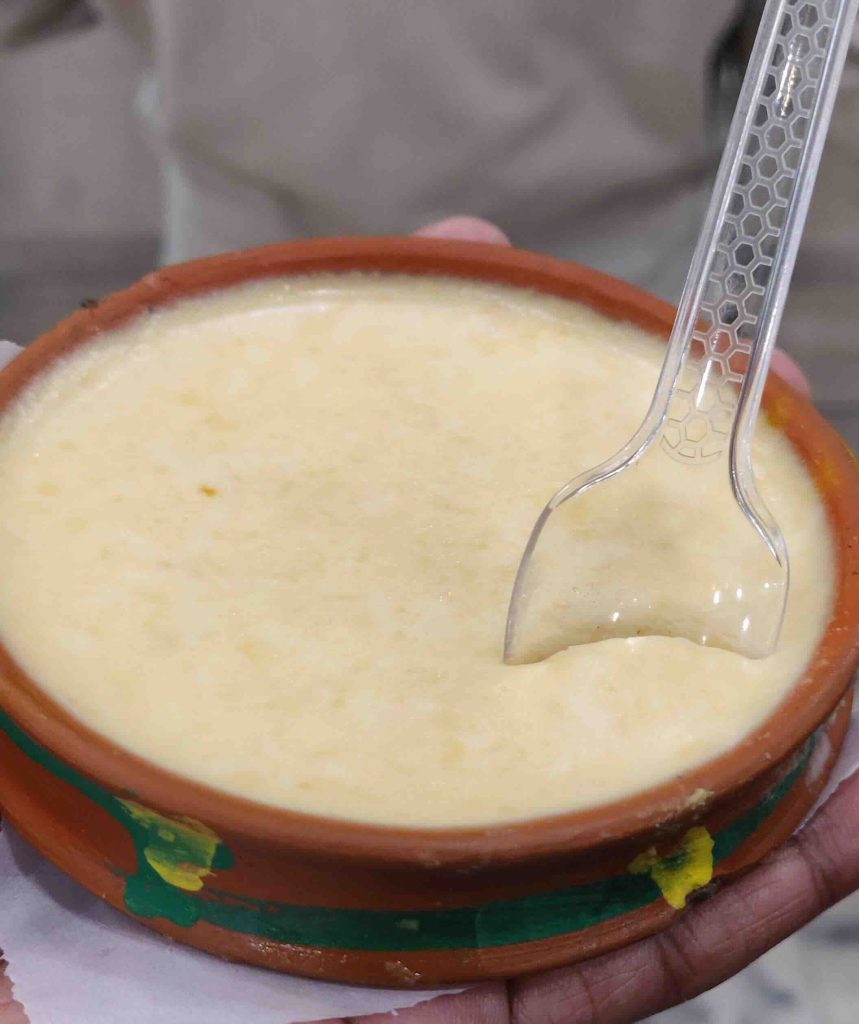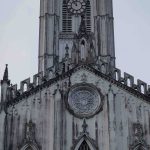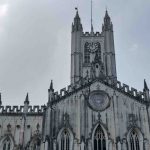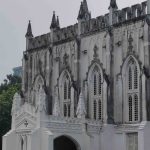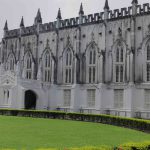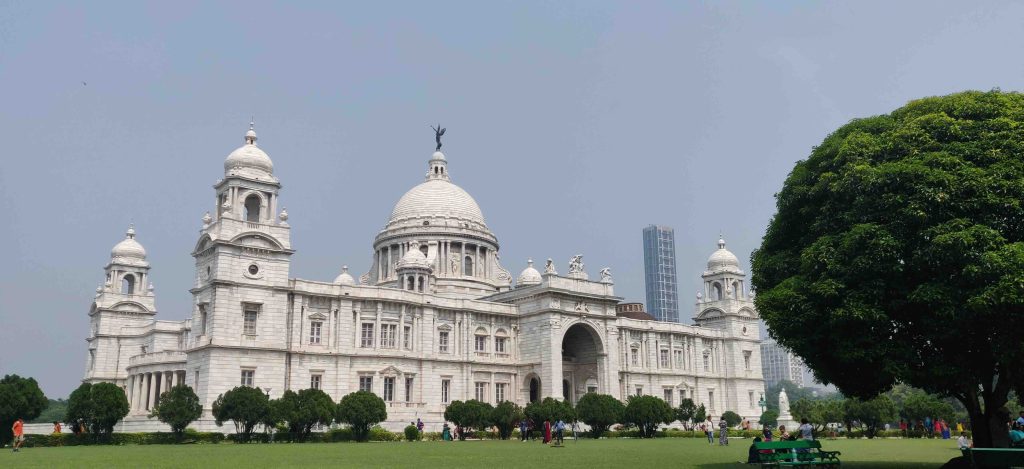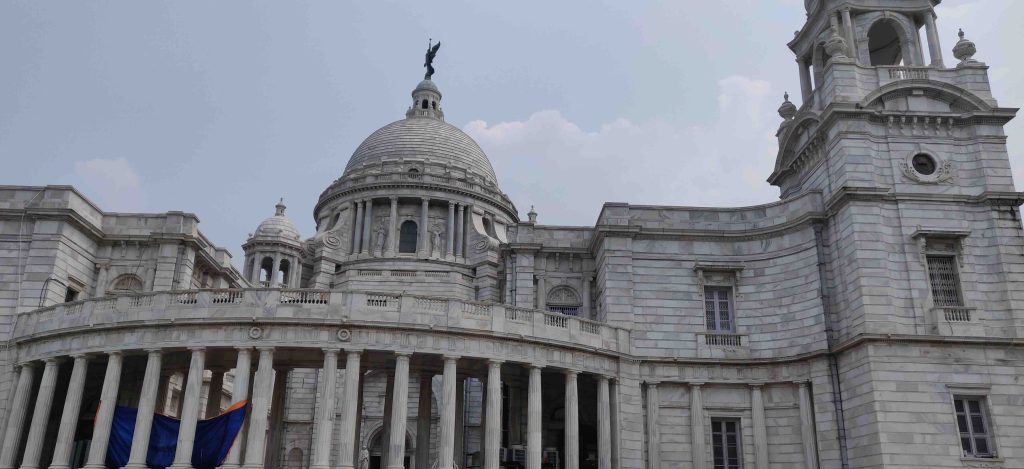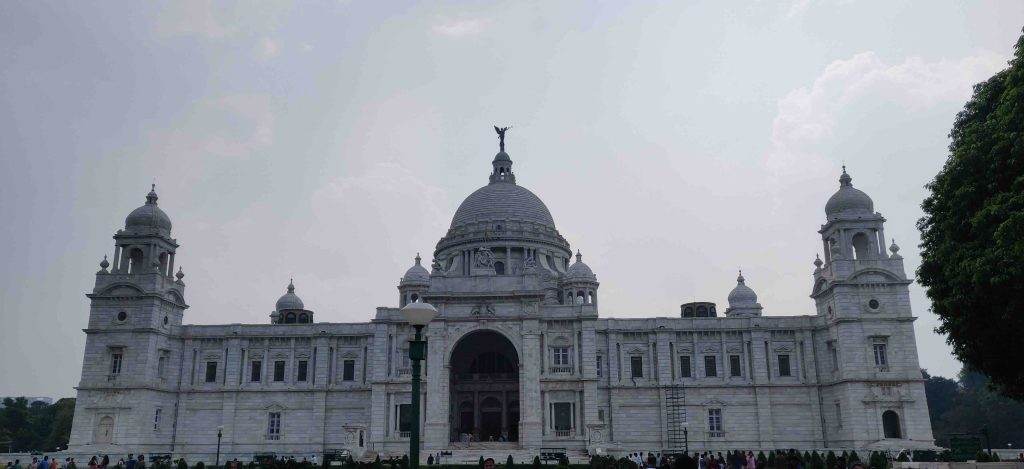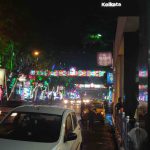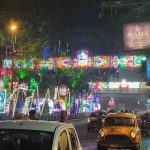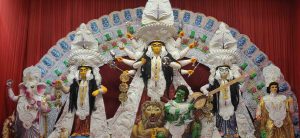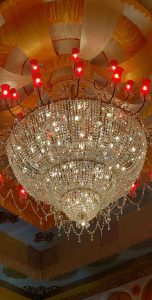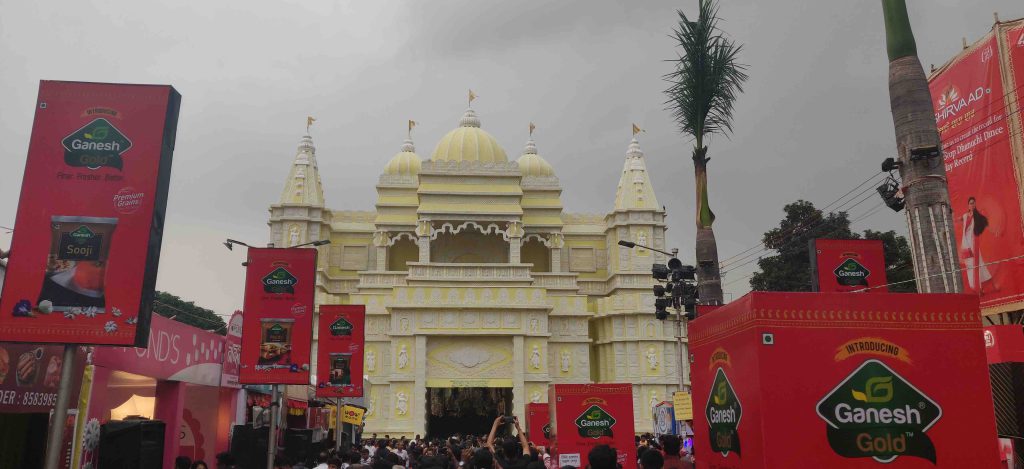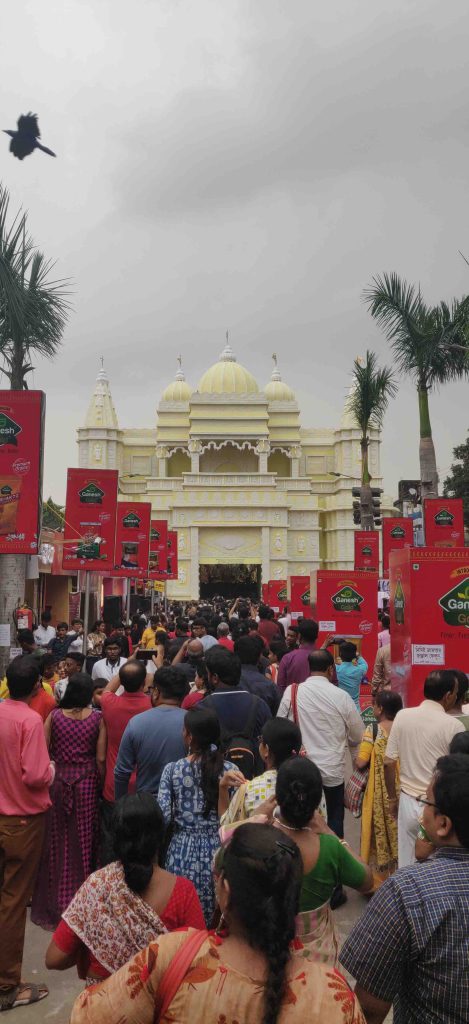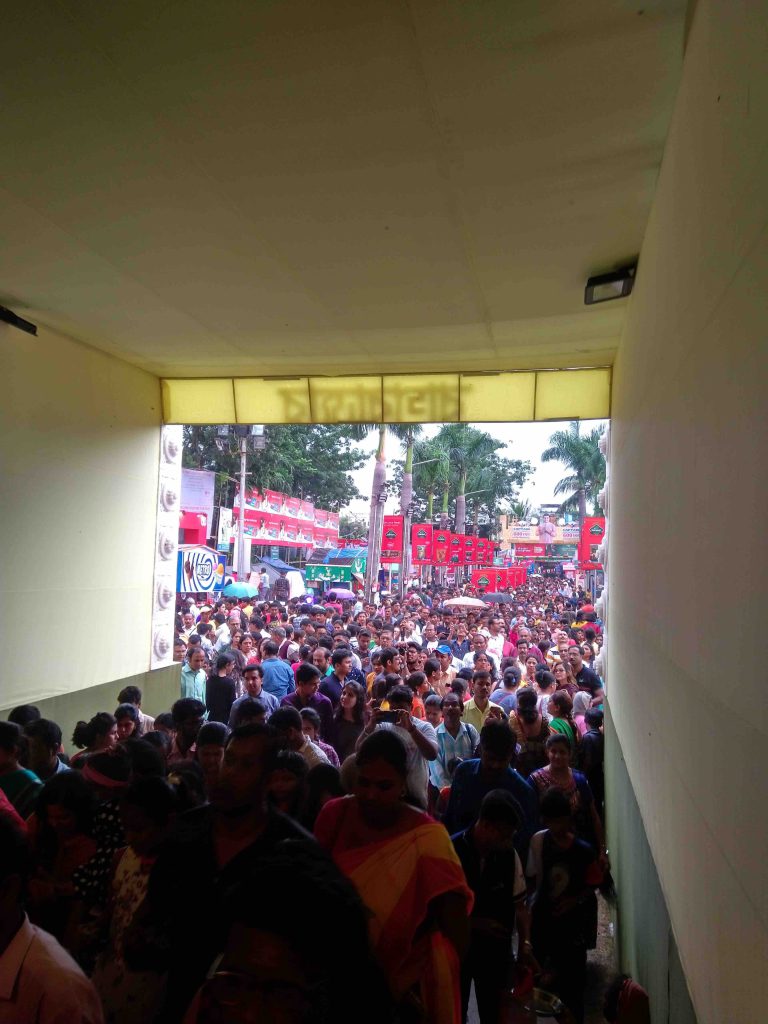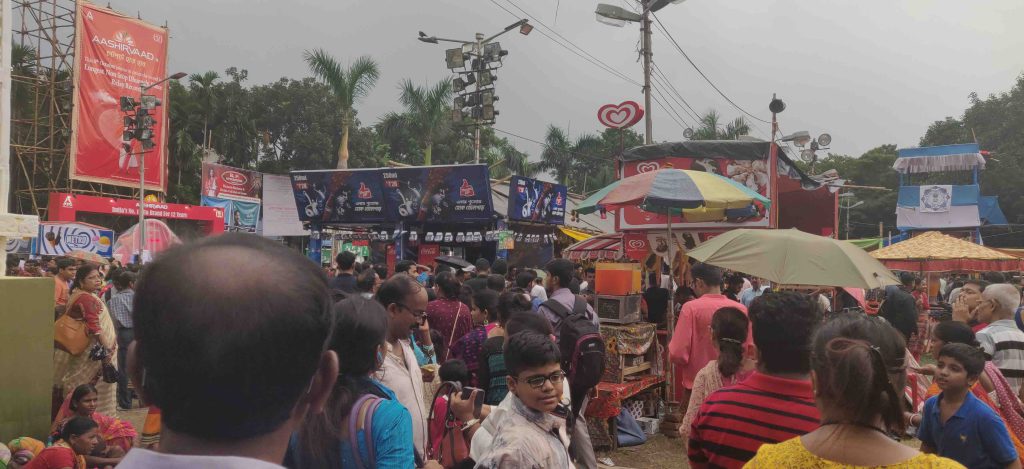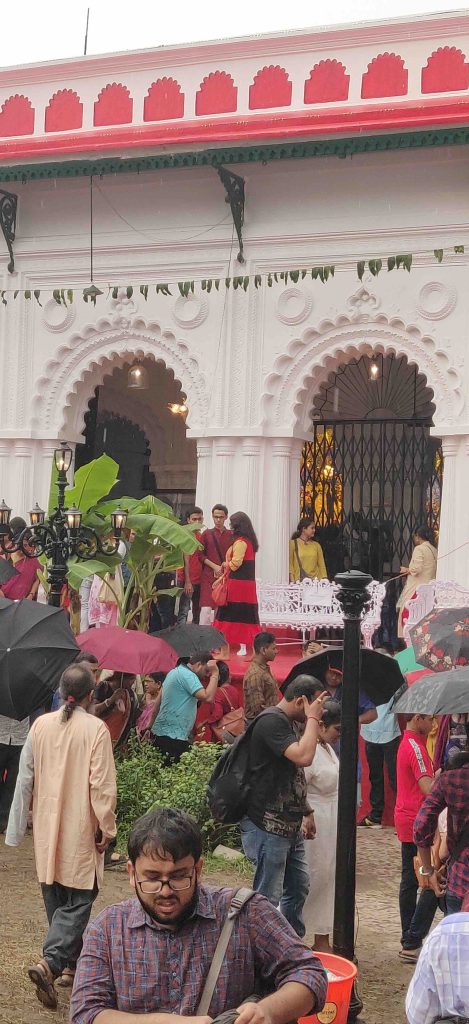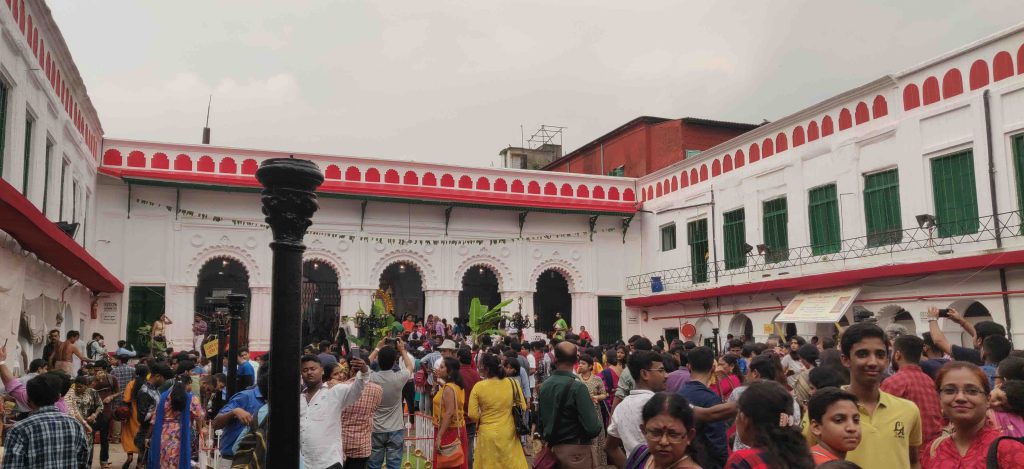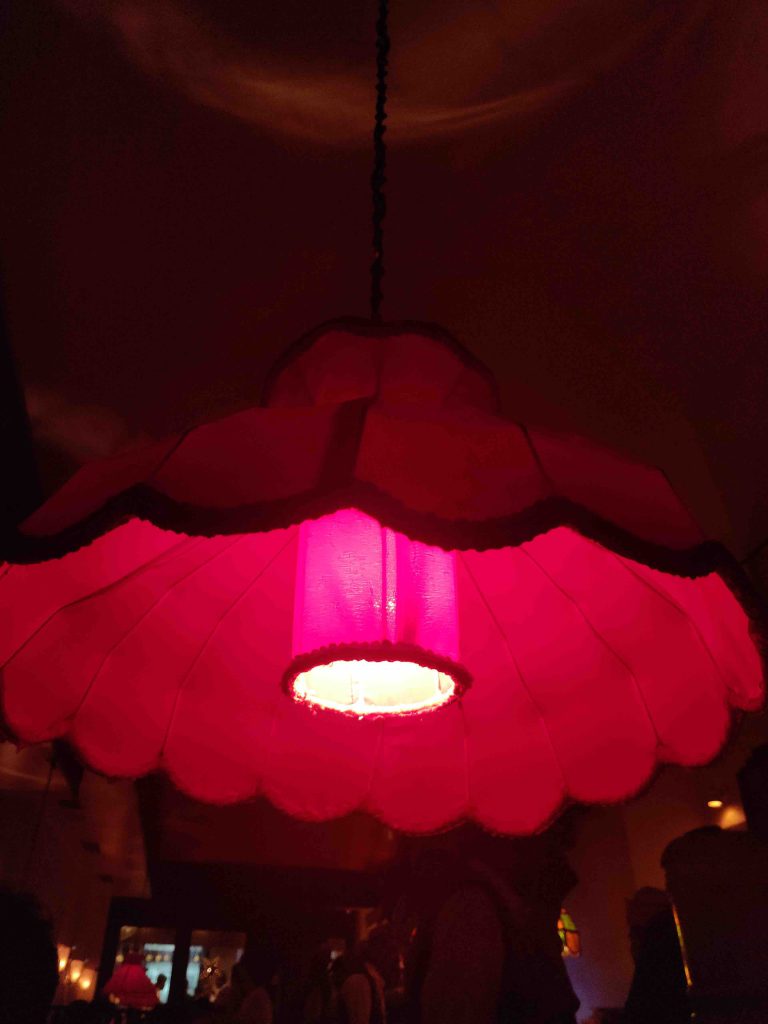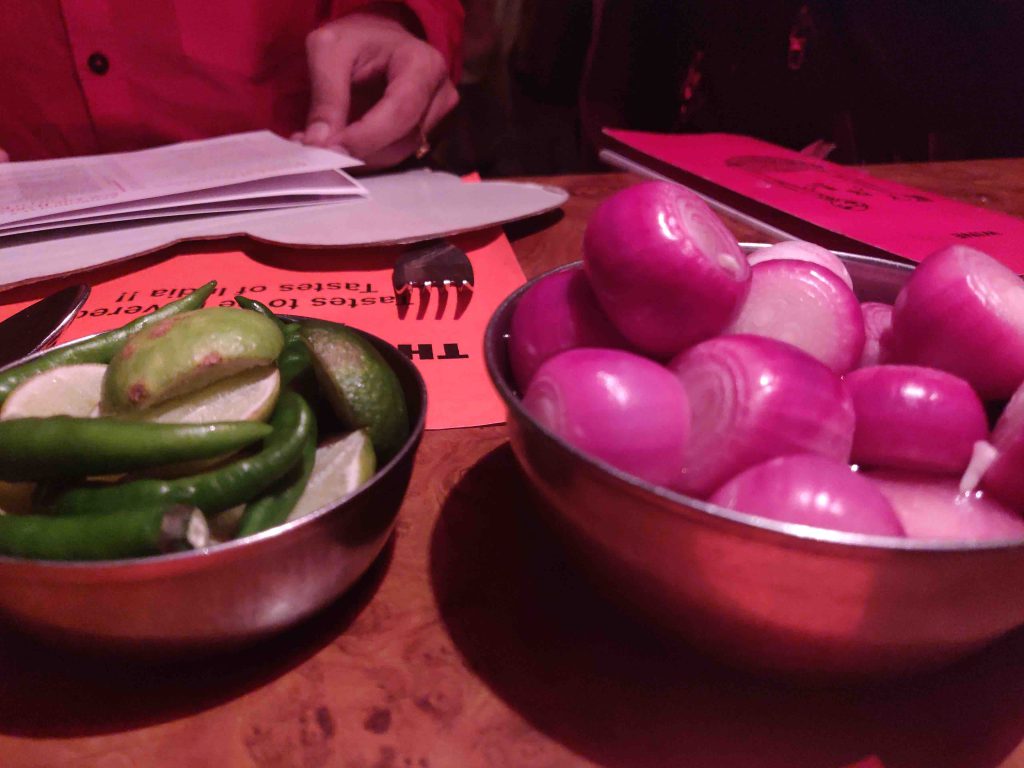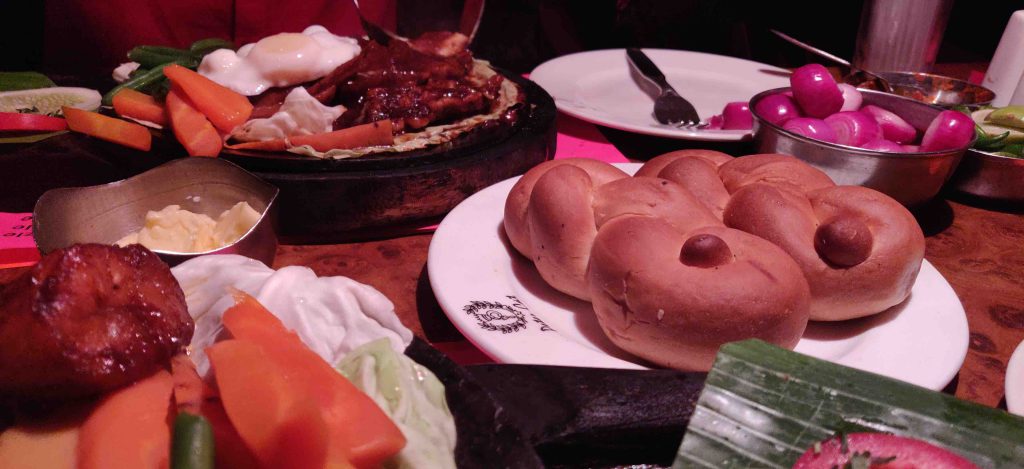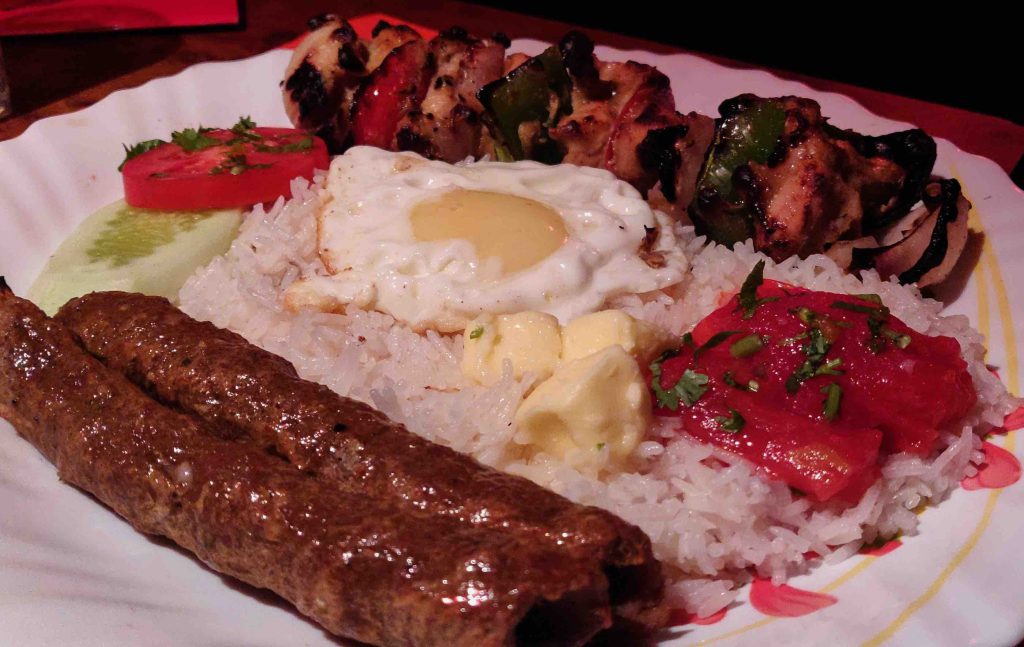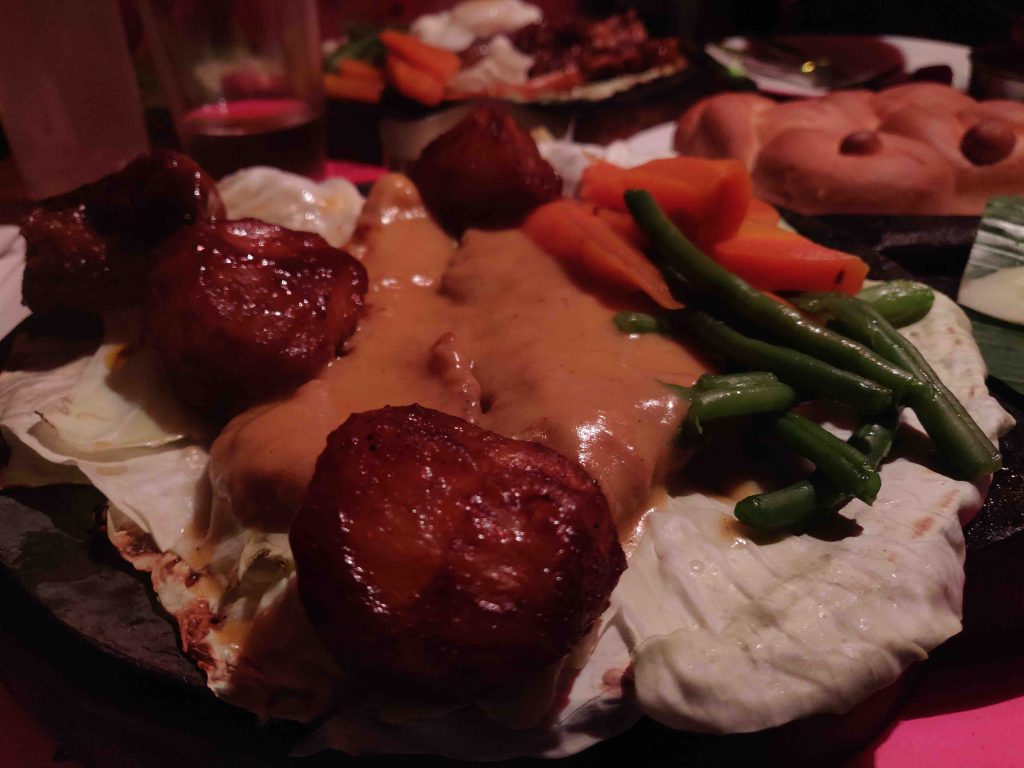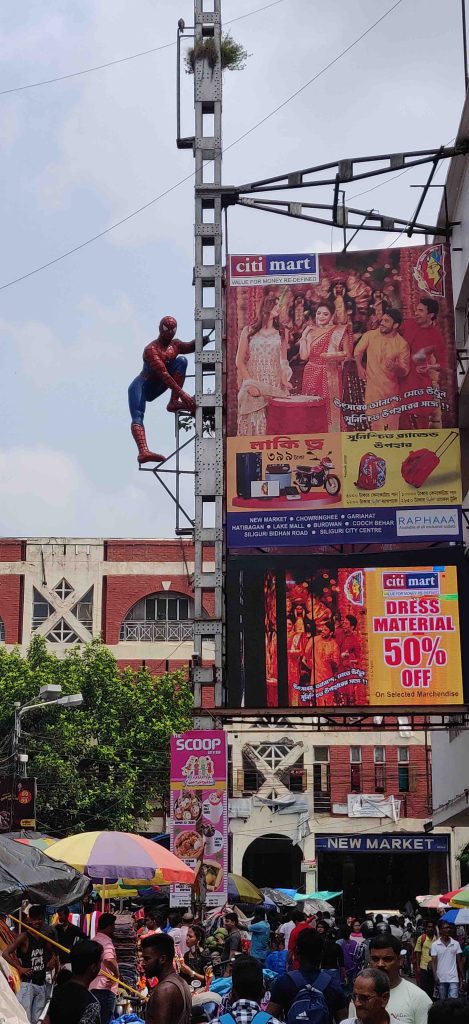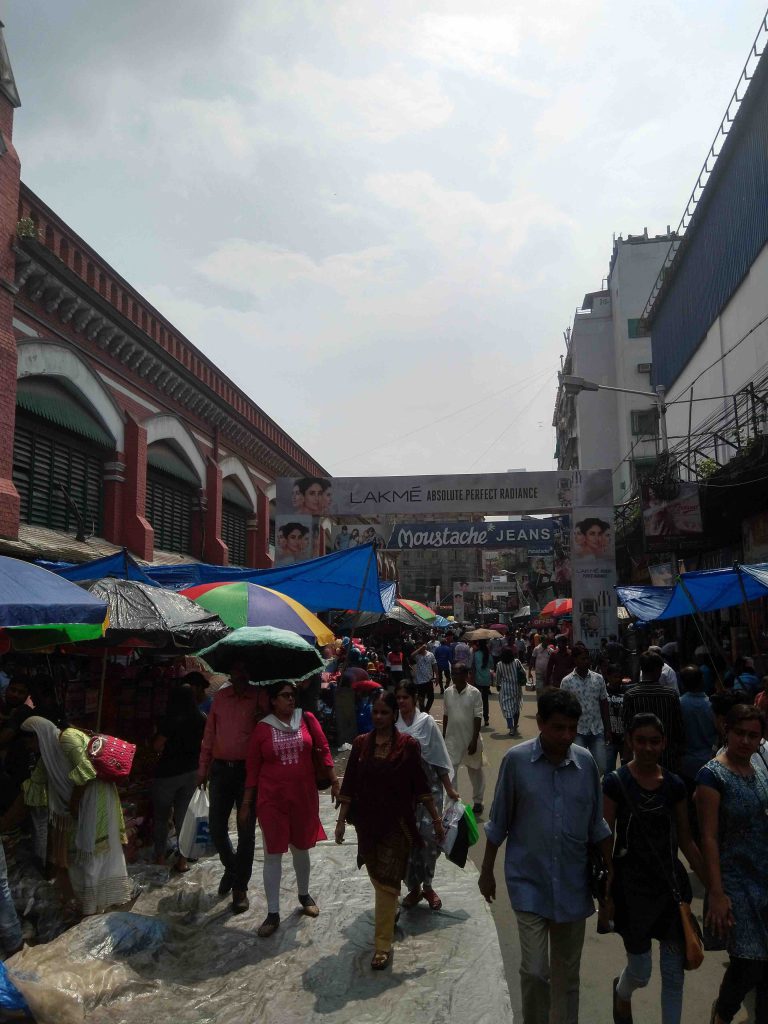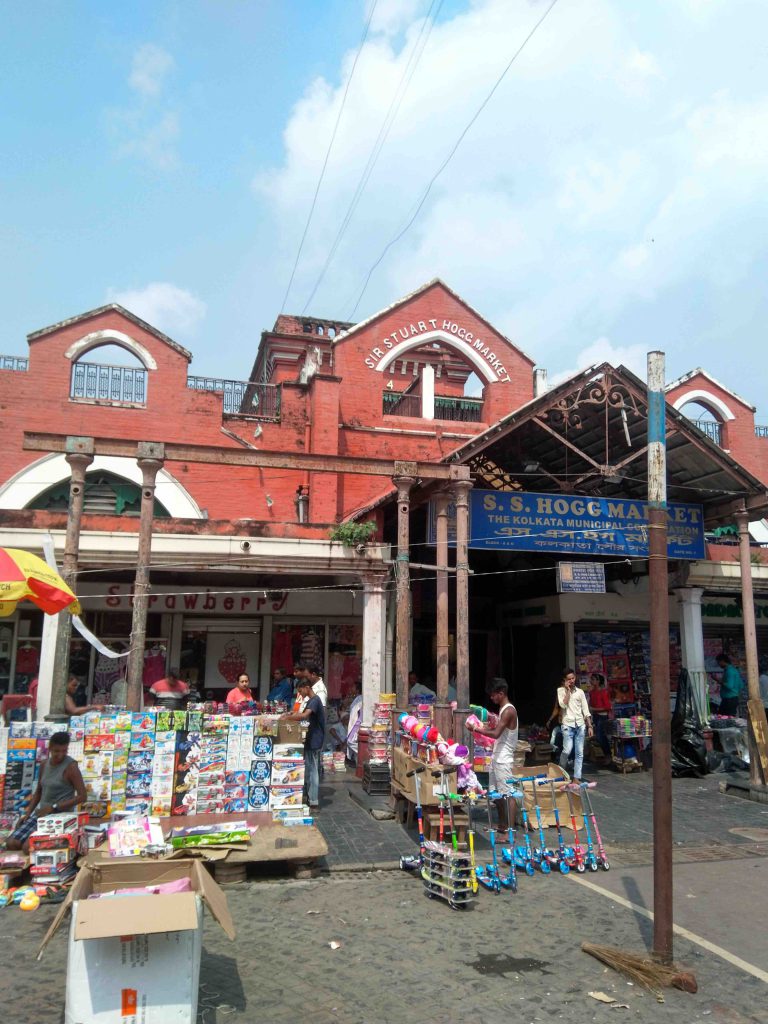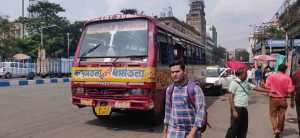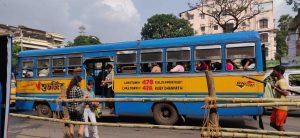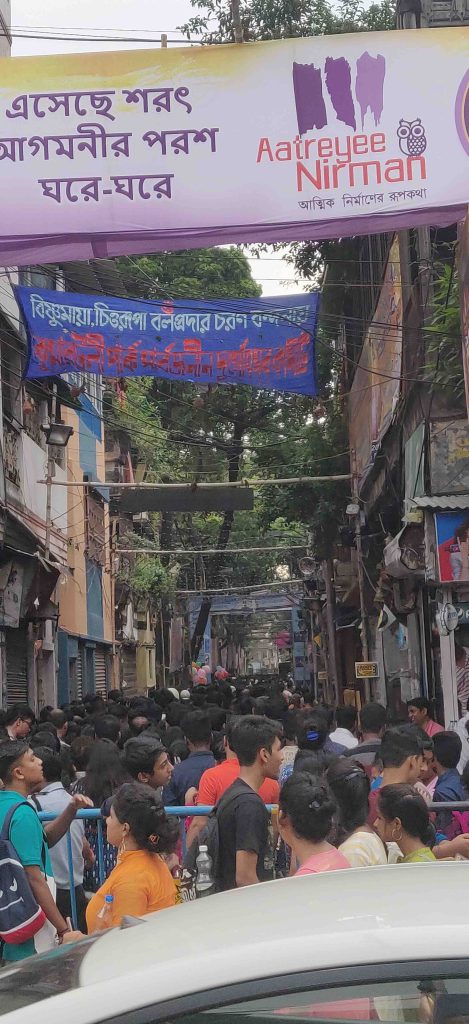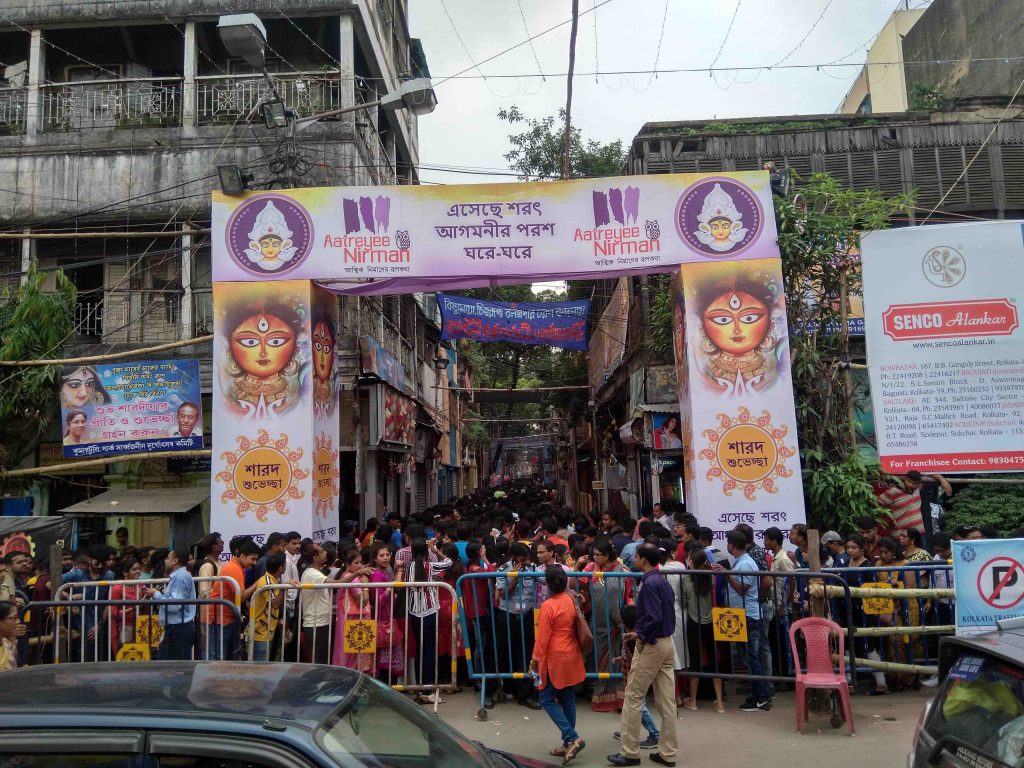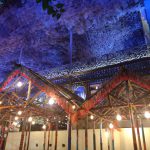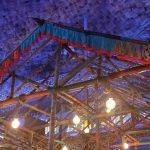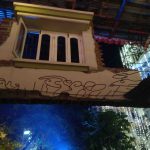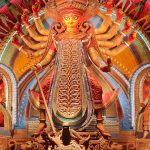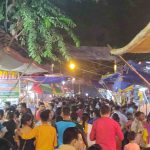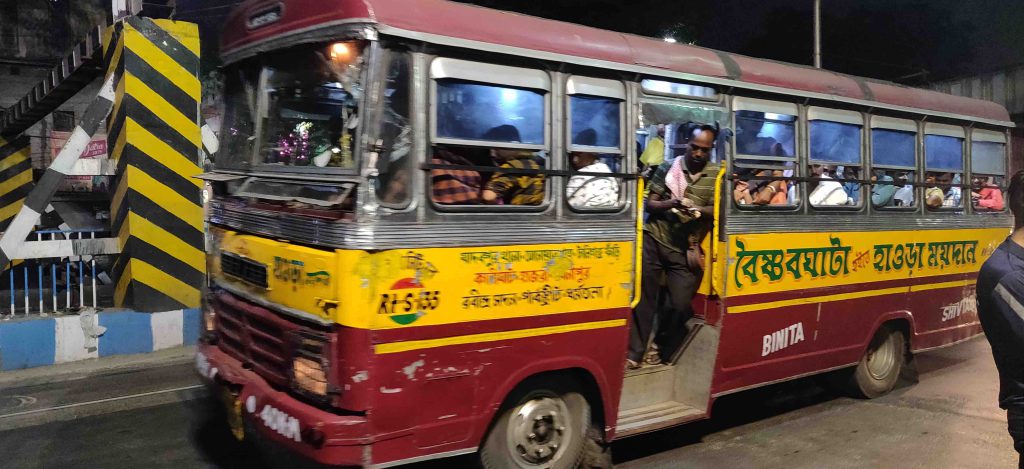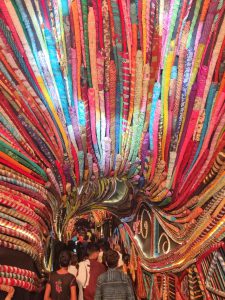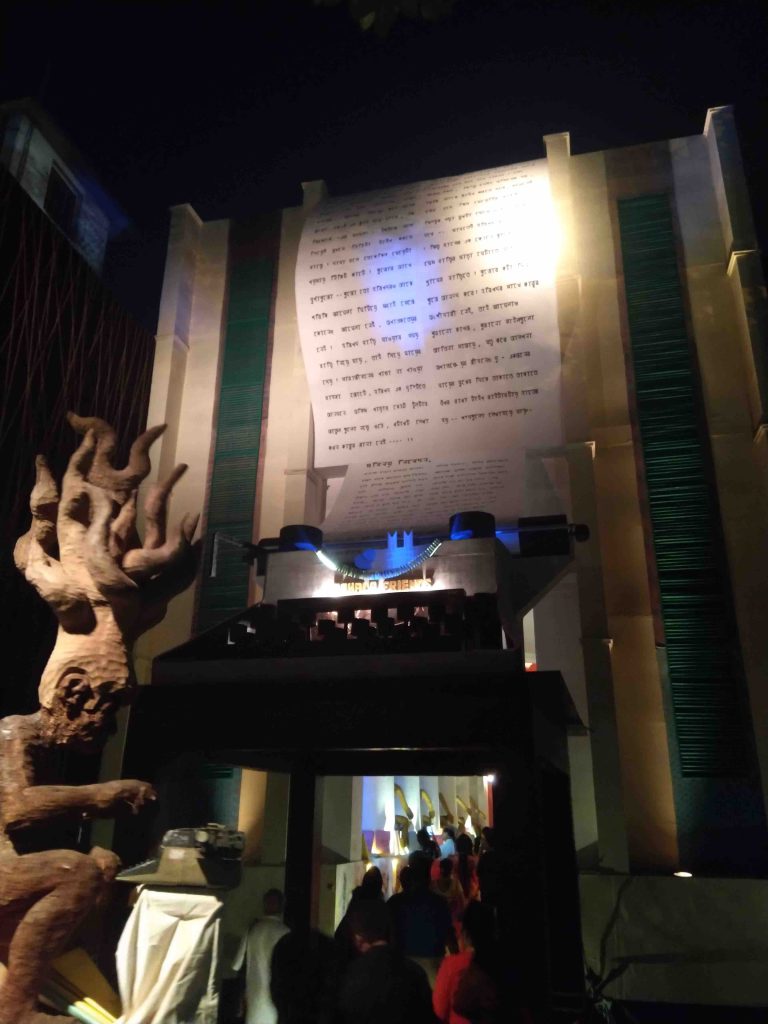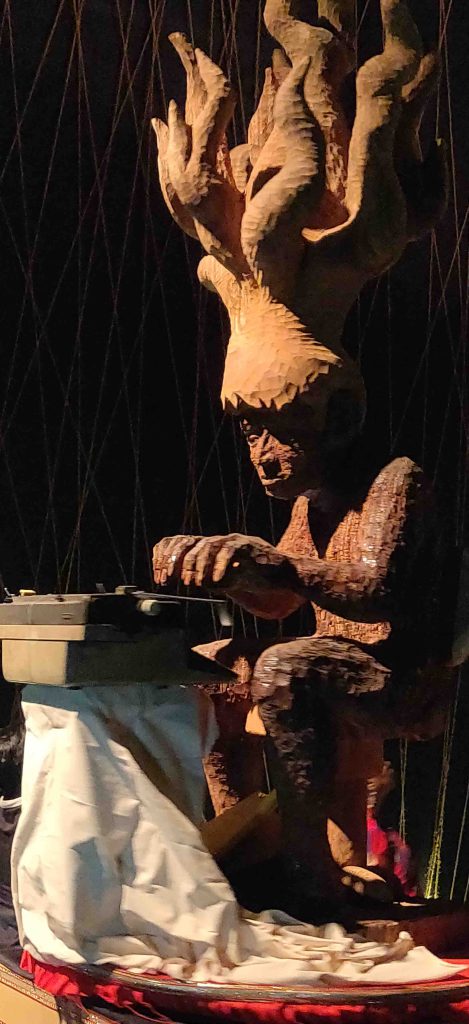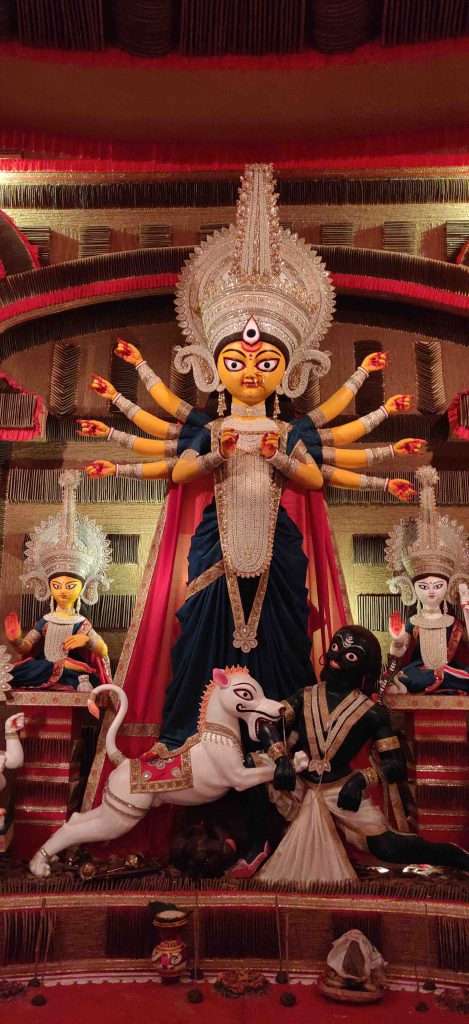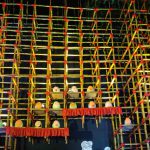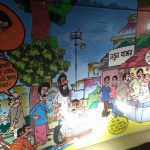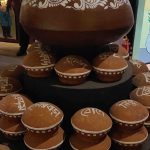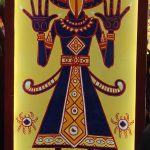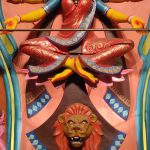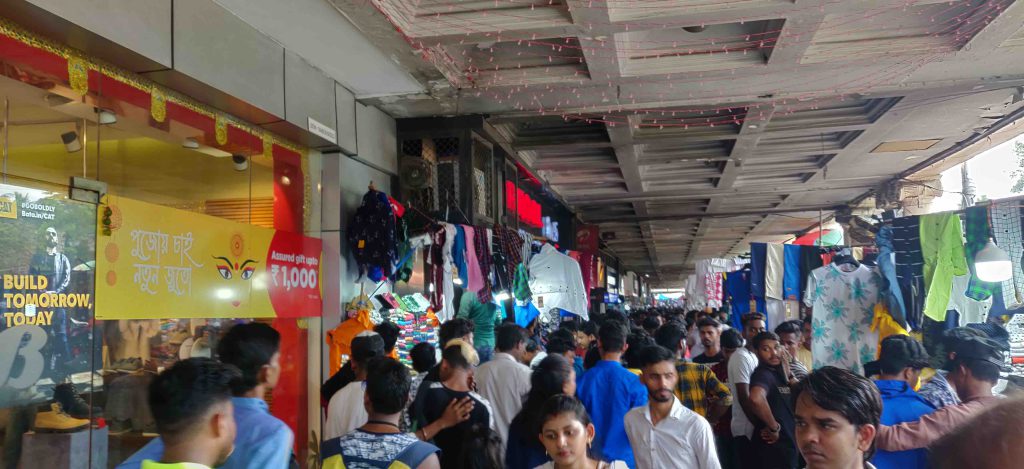My stomach didn’t feel entirely normal yet; I just stuck to sipping a bit of water occasionally. But at 1 pm, I decided to check out the restroom before heading for lunch. Since the crowds were less, it didn’t seem like anyone had used the toilet, and it was fairly clean.
The canteen was on the second floor, and I opted for the non-veg thali (meal) – a bit risky considering an upset stomach, but on seeing the fish curry, I wanted to try it out. It was a very simple Bengali meal – white rice, dhal, fish curry and a semi-gravy potato dish. I ate slowly. My stomach didn’t crib during lunch, and I enjoyed the meal. It felt like a nice, homely meal.
Post lunch, I attended a live science magic show. They performed what appears initially to be magic, but they explain the science behind it. The performer was adept at involving the audience and attracting the kids – it was only when I attended this show that I realized that there was a decent crowd hanging around in the museum; the entire mini-hall was almost full. More people seemed to trickle into the museum post-lunch.
I did a quick tour of the various galleries (television, metals, transportation, electricity, and physics), used the restroom one last time, and left BTIM by Uber at 2:30 pm to meet Deb.
Because of the festival, his street was cordoned off from vehicles.
“Can’t get to your street. I’m getting off at this junction. There’s a road here with plenty of bookshops,” I told him on the phone.
The lane where I got off had shops that sold educational books, and there were umpteen of them. Most of them were closed – probably festival holidays.
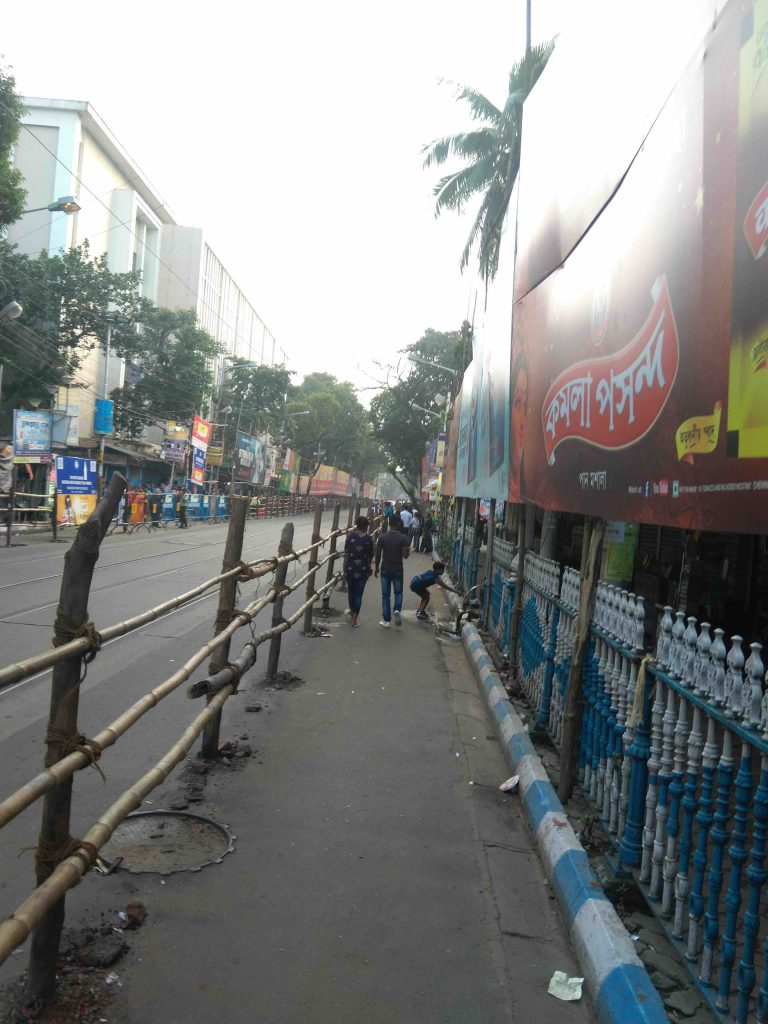
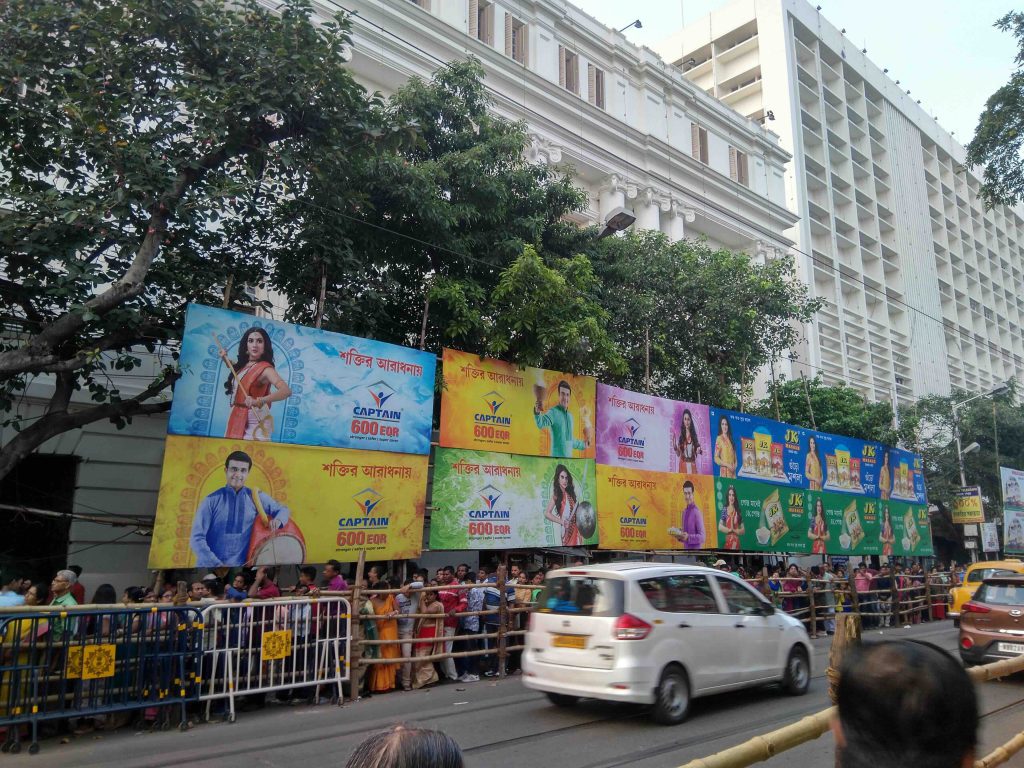
Only after looking at Google Maps did I realize that his home was just next to some of the most famous pandals of North Kolkata – College Square, Muhammad Ali Park and Santosh Mitra Square. Aaron, who had departed from Esplanade around the same time as me, hopped out of his cab in the traffic and joined me at the junction. Deb came a few minutes later to lead us to his home.
He took us past the swelling crowds headed to College Square; we couldn’t get into College Square – we would have to wait at least an hour to enter, but as we went by, we could see the structure they had created.
“They’ve made the Umaid Bhavan,” he said.
You can see the structure in the snap we clicked while passing by.
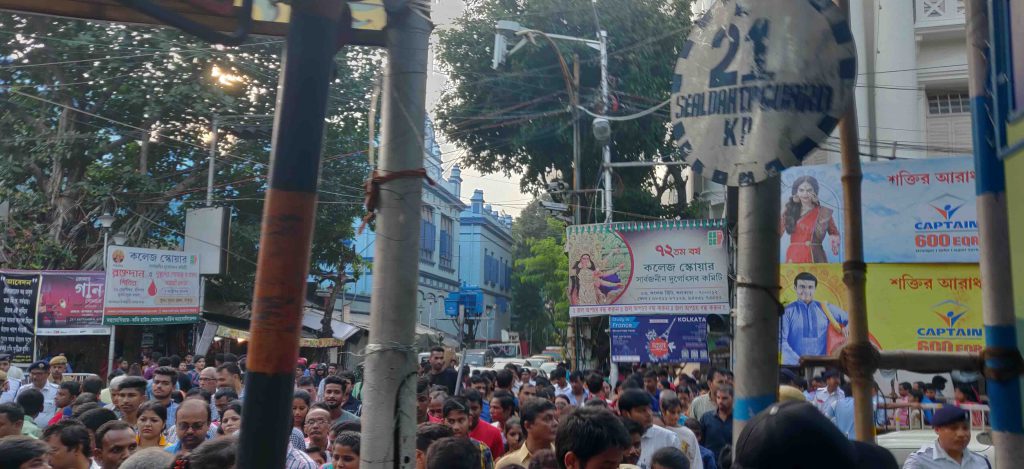
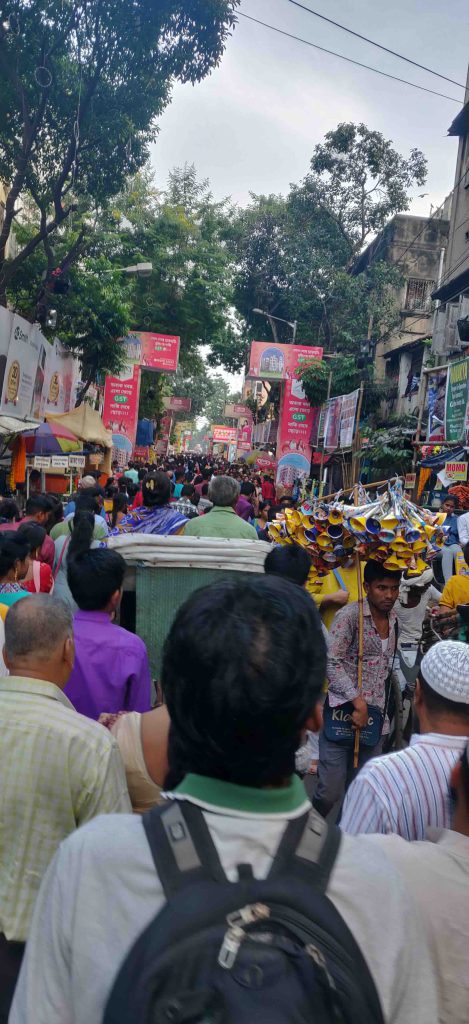
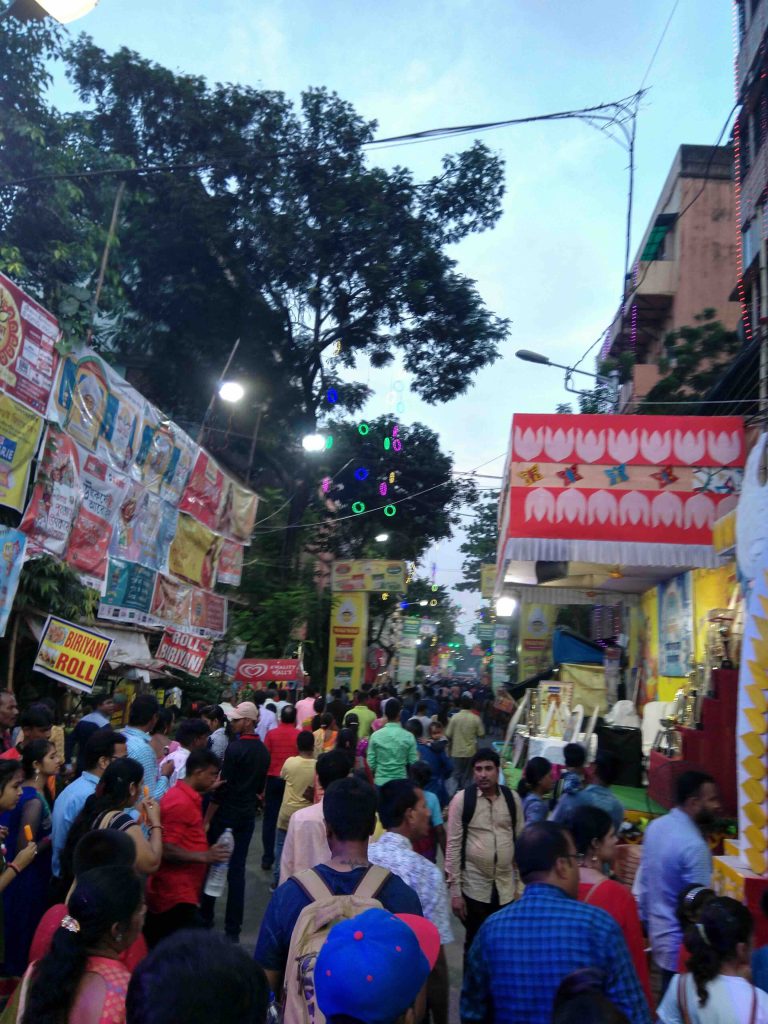
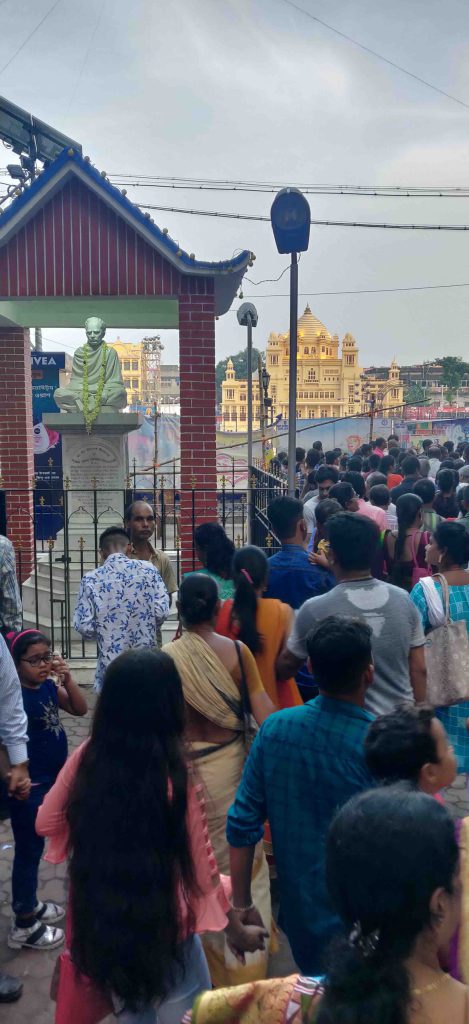
” Earlier, there were VIP passes for these pandals. If you had that pass, then you don’t need to wait in the queues, but this year they stopped it.”
Deb got us past a couple of manned barricades, where the police let us cross over.
“In some places in Kolkata, depending on the pandals around, the police prevent people from entering without a pass. So they give us the residents a pass and only allow pass holders across these barricades for the sake of safety.”
We walked for about 15 minutes through some of the back lanes lined with two and three-storey buildings before we reached Deb’s home.
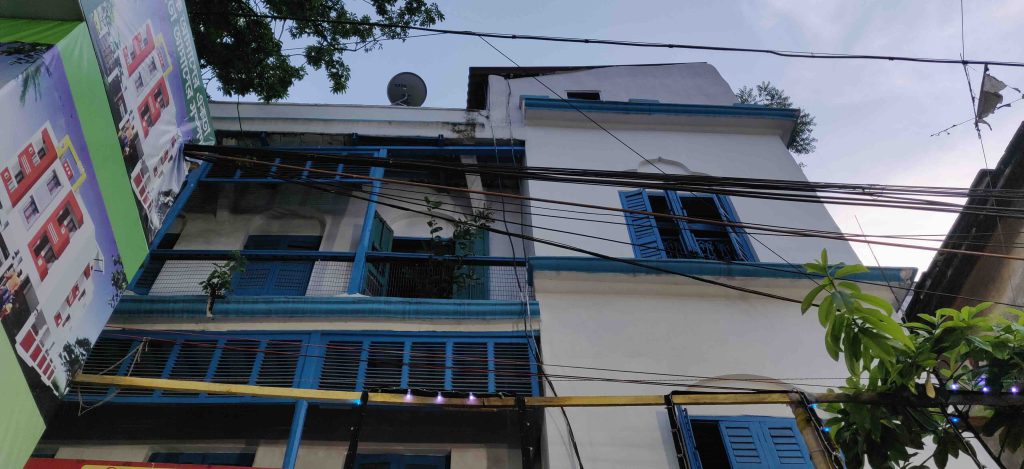
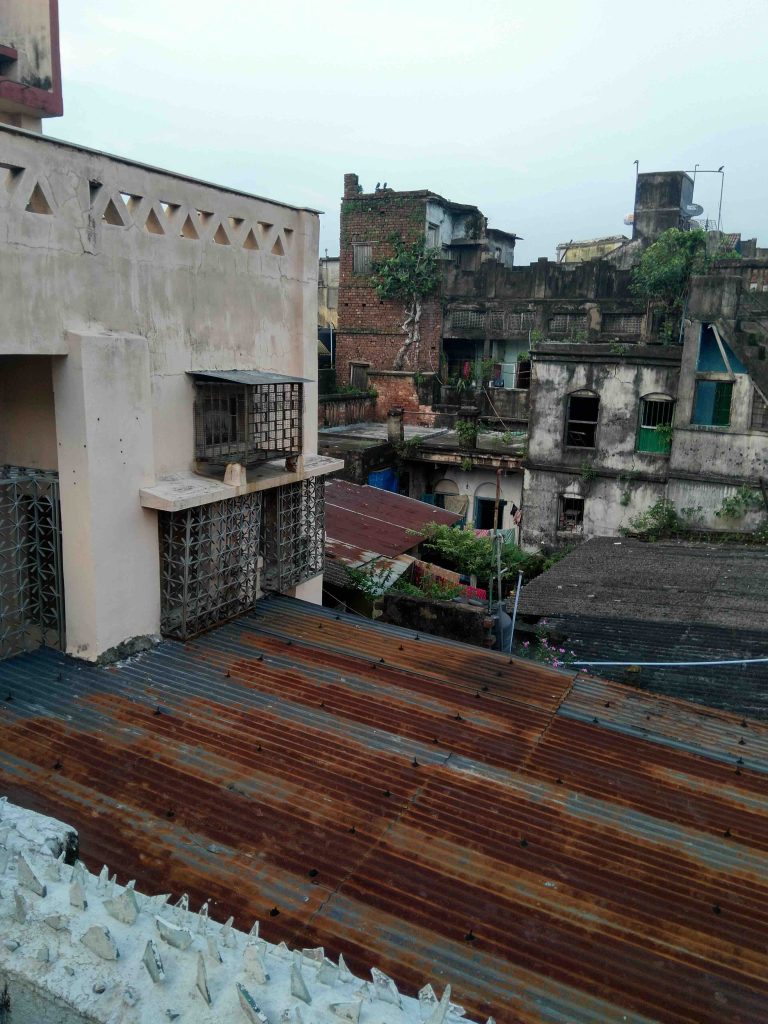
Looking at the entrance, you’d be deceived into thinking the place was small! There were a couple of floors, and from the terrace, you could see how close to one another each building on the street was – one could easily hop across from the terrace of one building to the next; we’ve seen such settings in many movies. Kind of made it like a close-knit community – most people owned these homes for decades and across generations.
By 5 pm, we were back on the street and headed to catch a cab to the airport – all surrounding areas around Deb’s home were flooded with people. And where there are people, you find eateries flourishing. There were plenty of roadside eateries – many selling a type of chicken and fish cutlet called a chaap.
“You’ll have one?” Deb asked us.
“I’ll taste a little bit – you both can buy one.”
I was tempted to have a whole piece but held off. It tasted good, and there were so many of these stalls on the road.

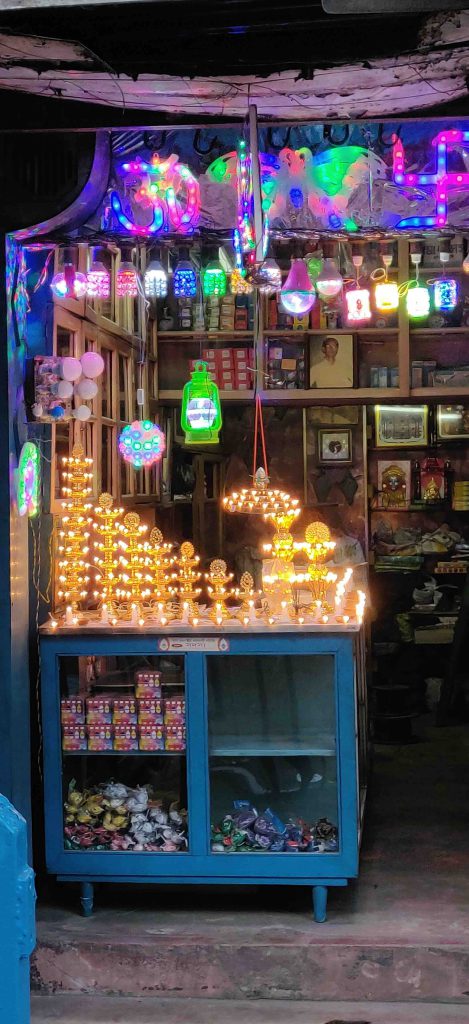
We were back in the Kolkata airport at 6 pm, where we noticed decorations outside.
“Finally, we get to see Chinese lamps!”
“Yeah, we went searching in Chinatown, but it’s right here in the airport.”
There were colourful lights and pagoda-type light fixtures. I guess because of the festival, they had decorated the airport.
Inside the airport, they had put some masks on display, similar to what I saw in the Indian museum.
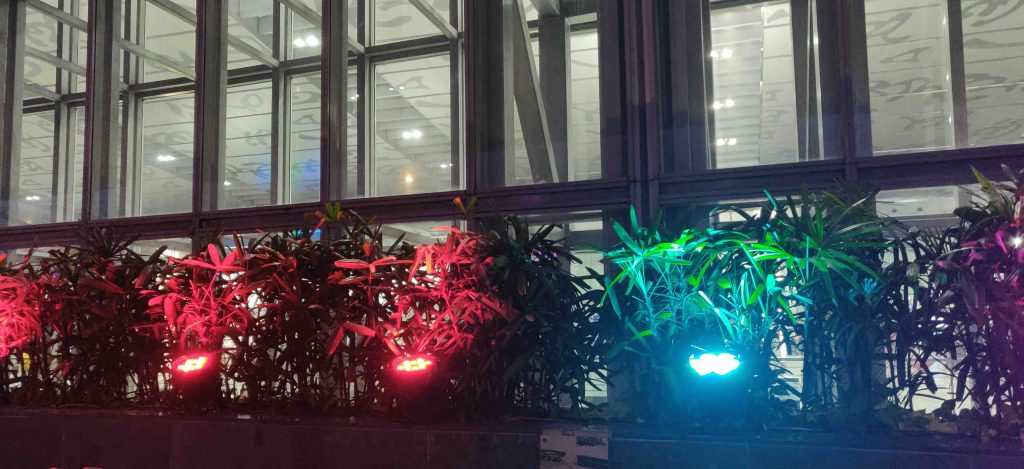
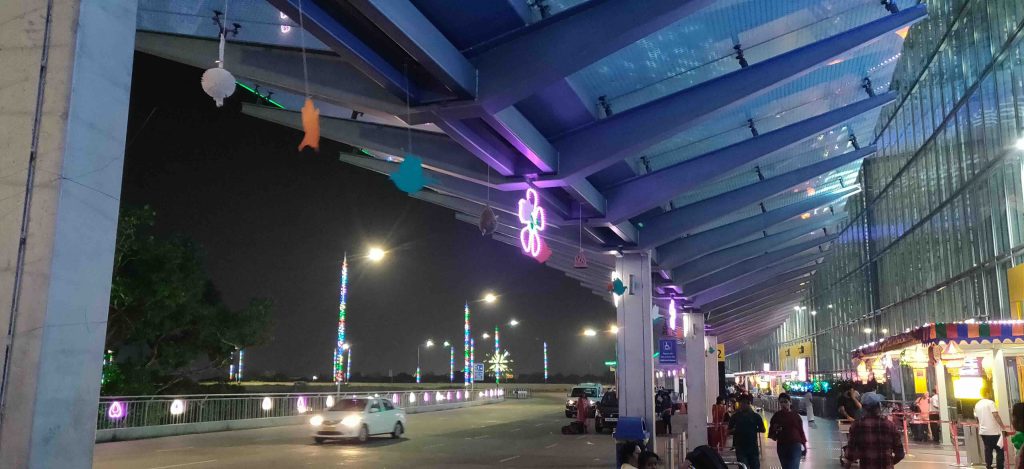
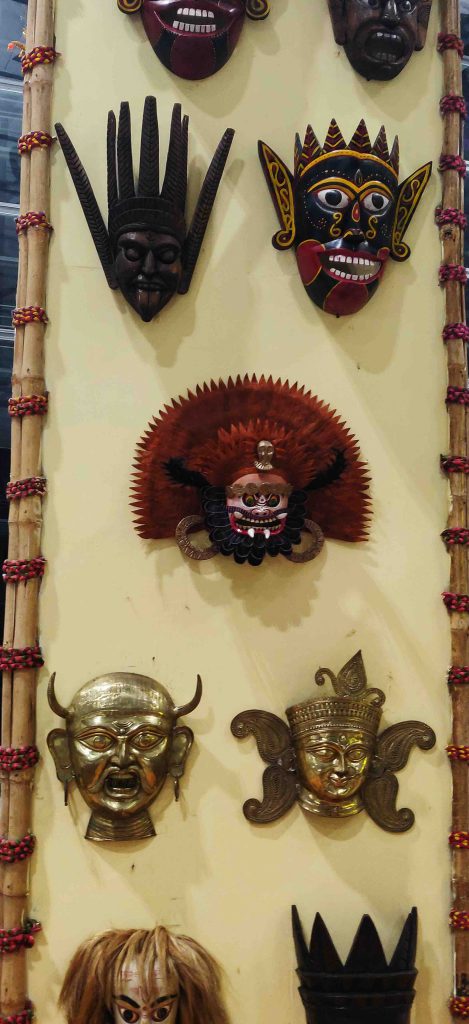
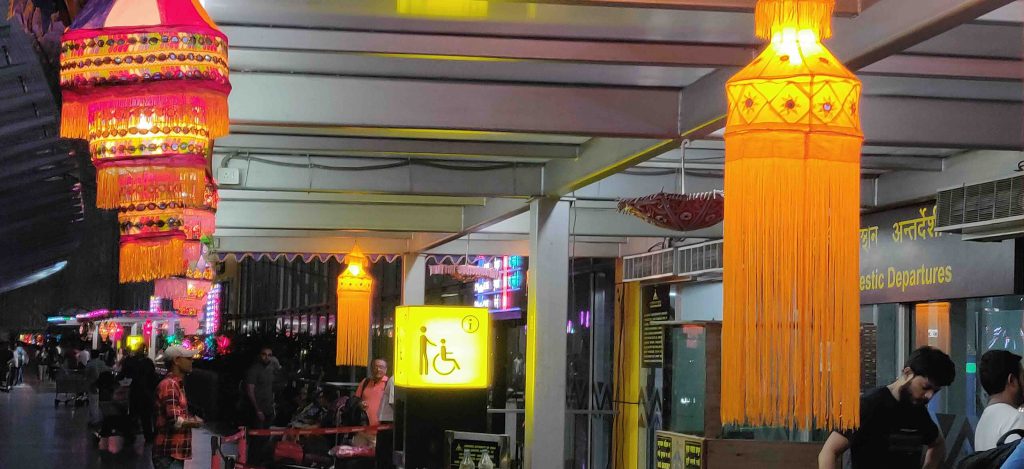
So that was the end of our short Kolkata trip; like my two Kolkata friends had said, we’d definitely have to make another trip just for the food. During the festival time, most eateries are flooded with demand, so it’s hard for them to maintain their usual quality. So you could and should visit the city during Durga puja – if you like art, you’d want to see as many pandals as possible; even if you aren’t into art, you’d still want to see a few pandals at least. And for foodies, definitely need to do a separate trip just for that in the off-season.
